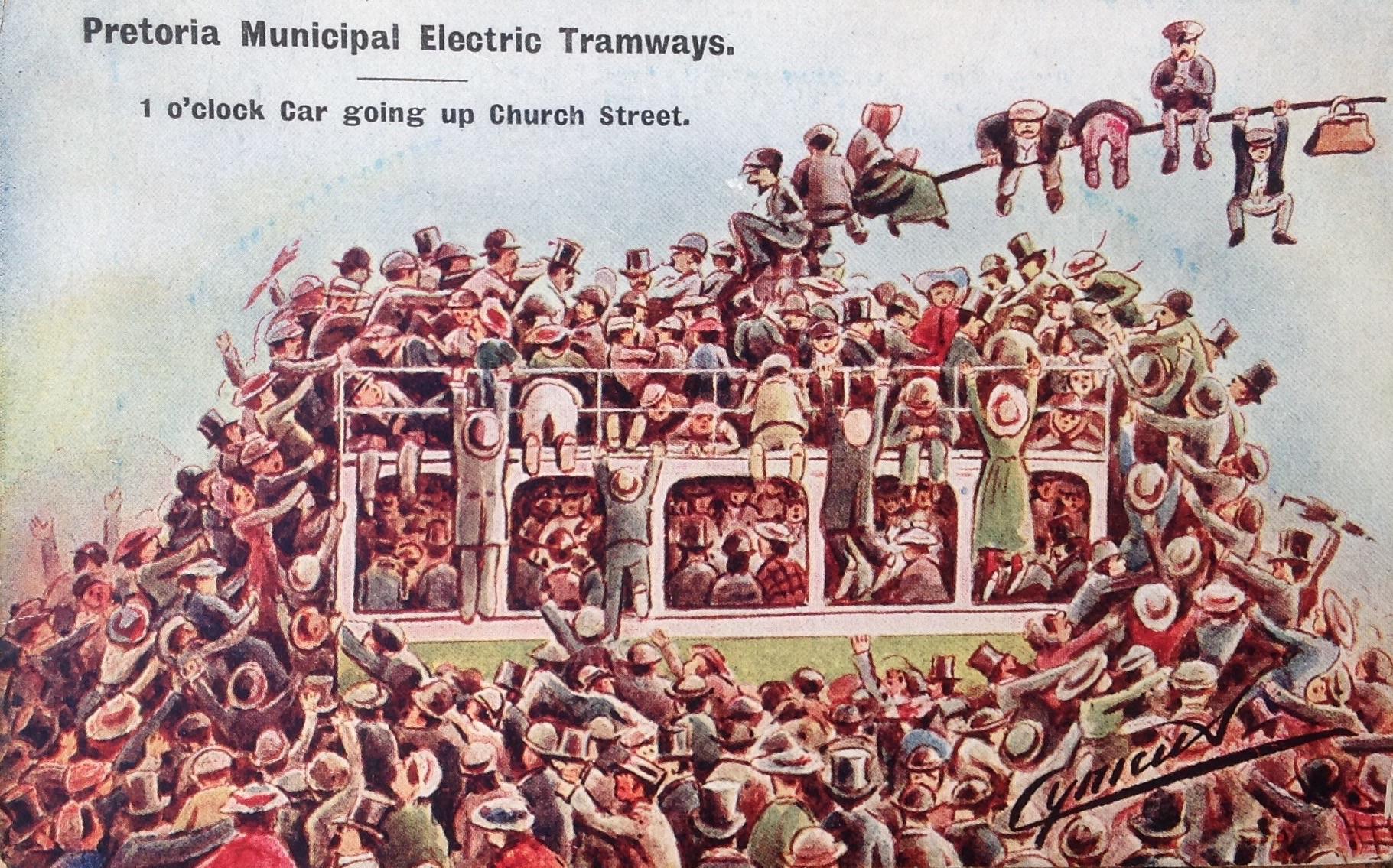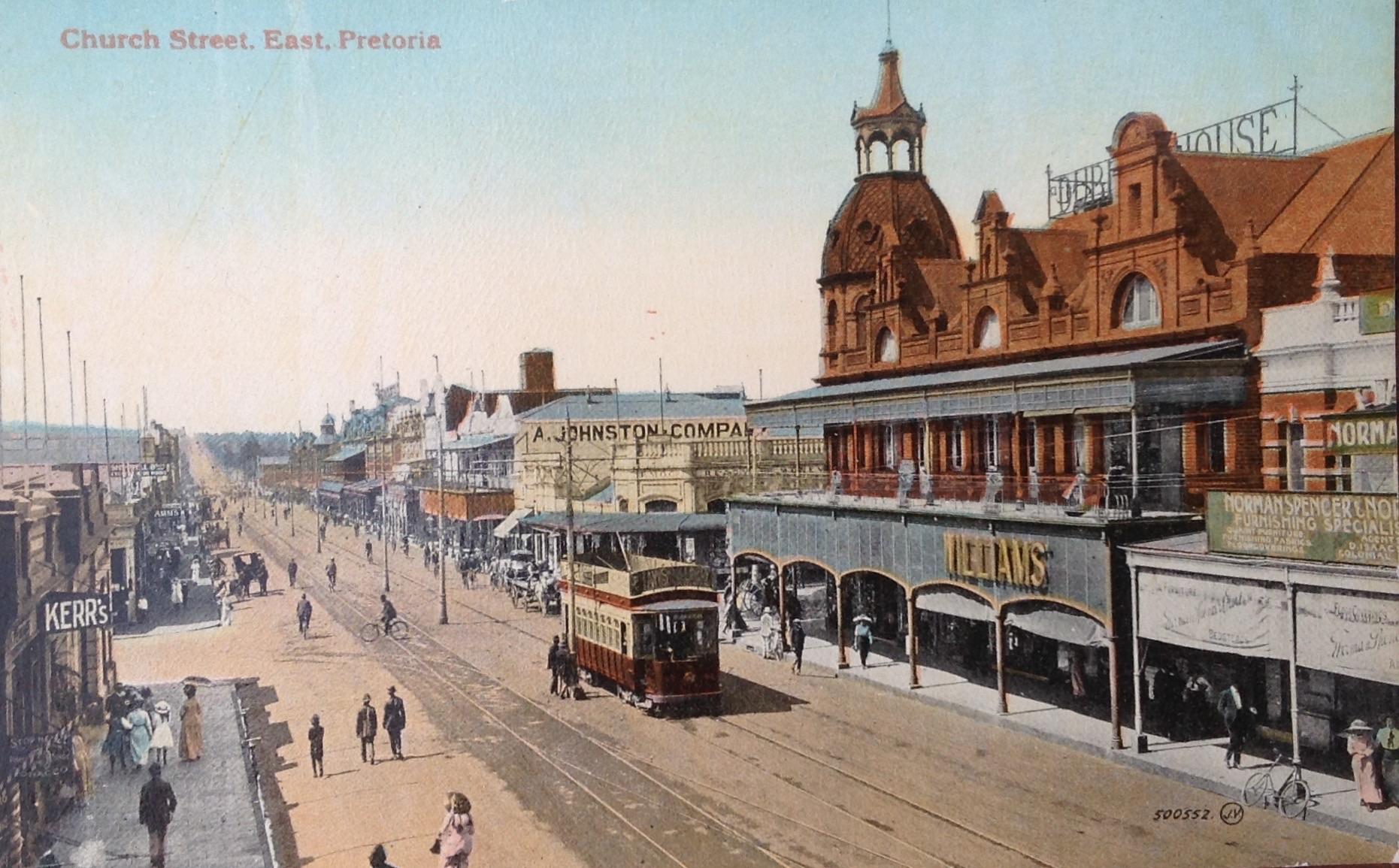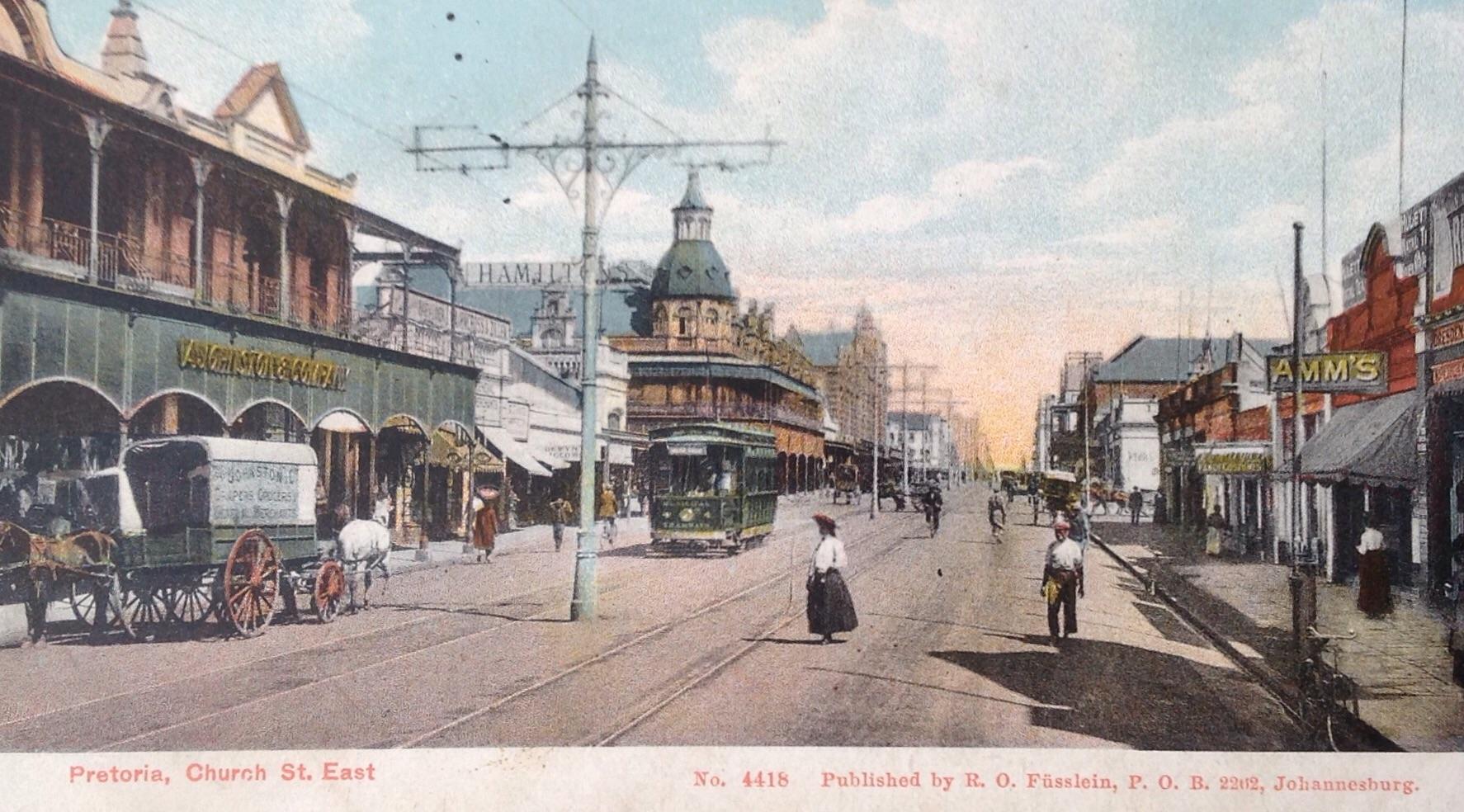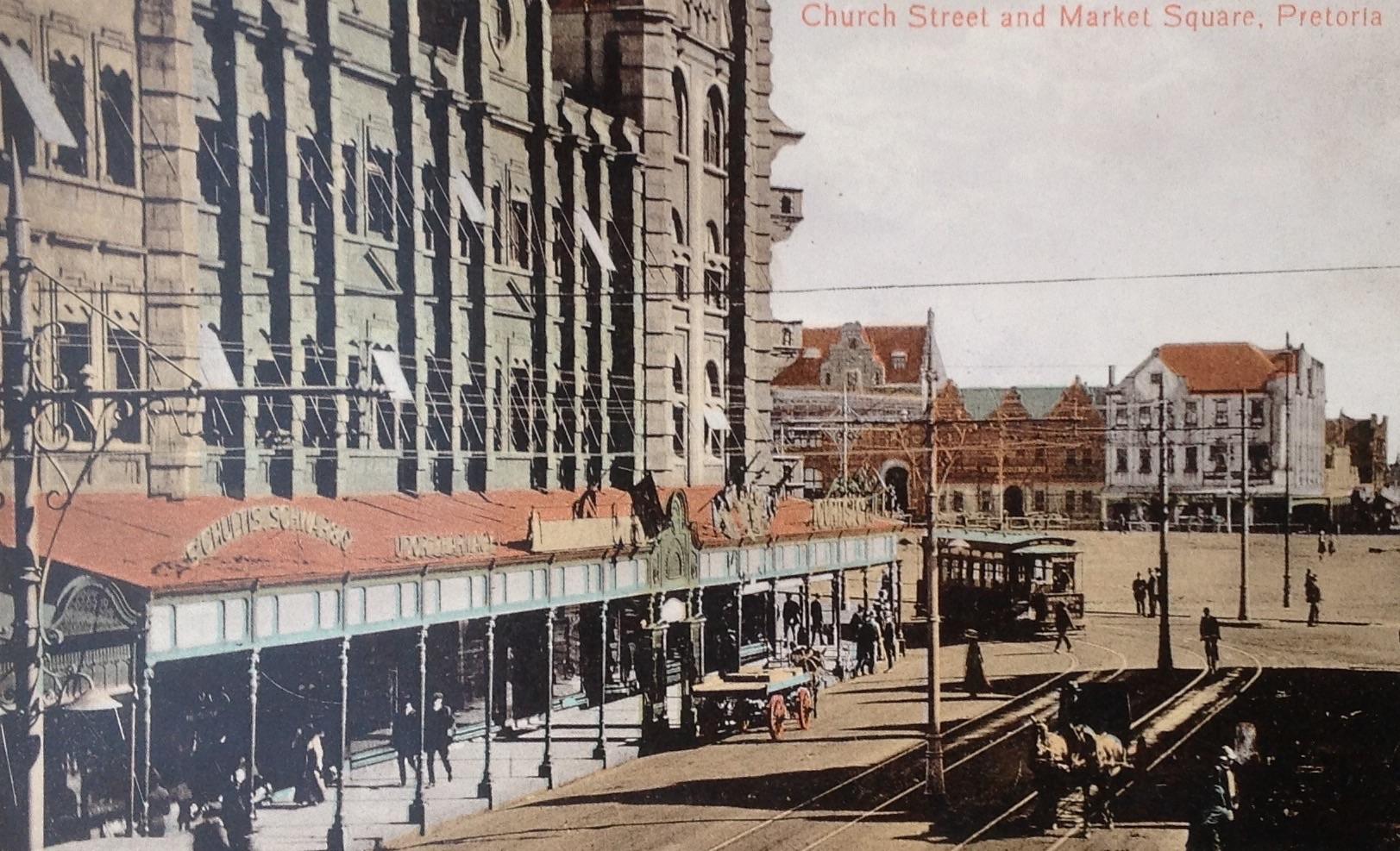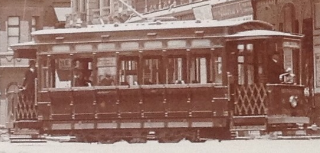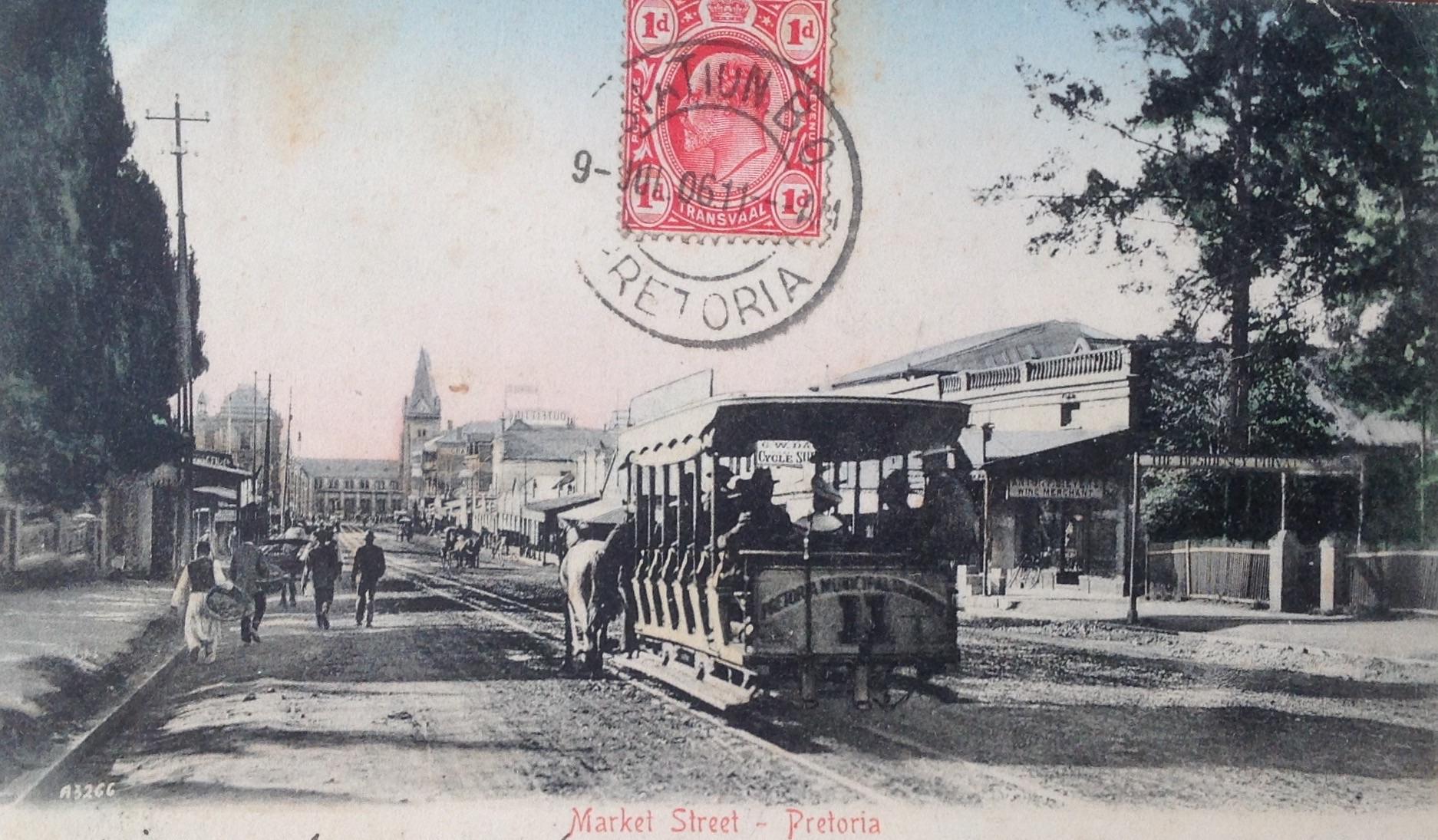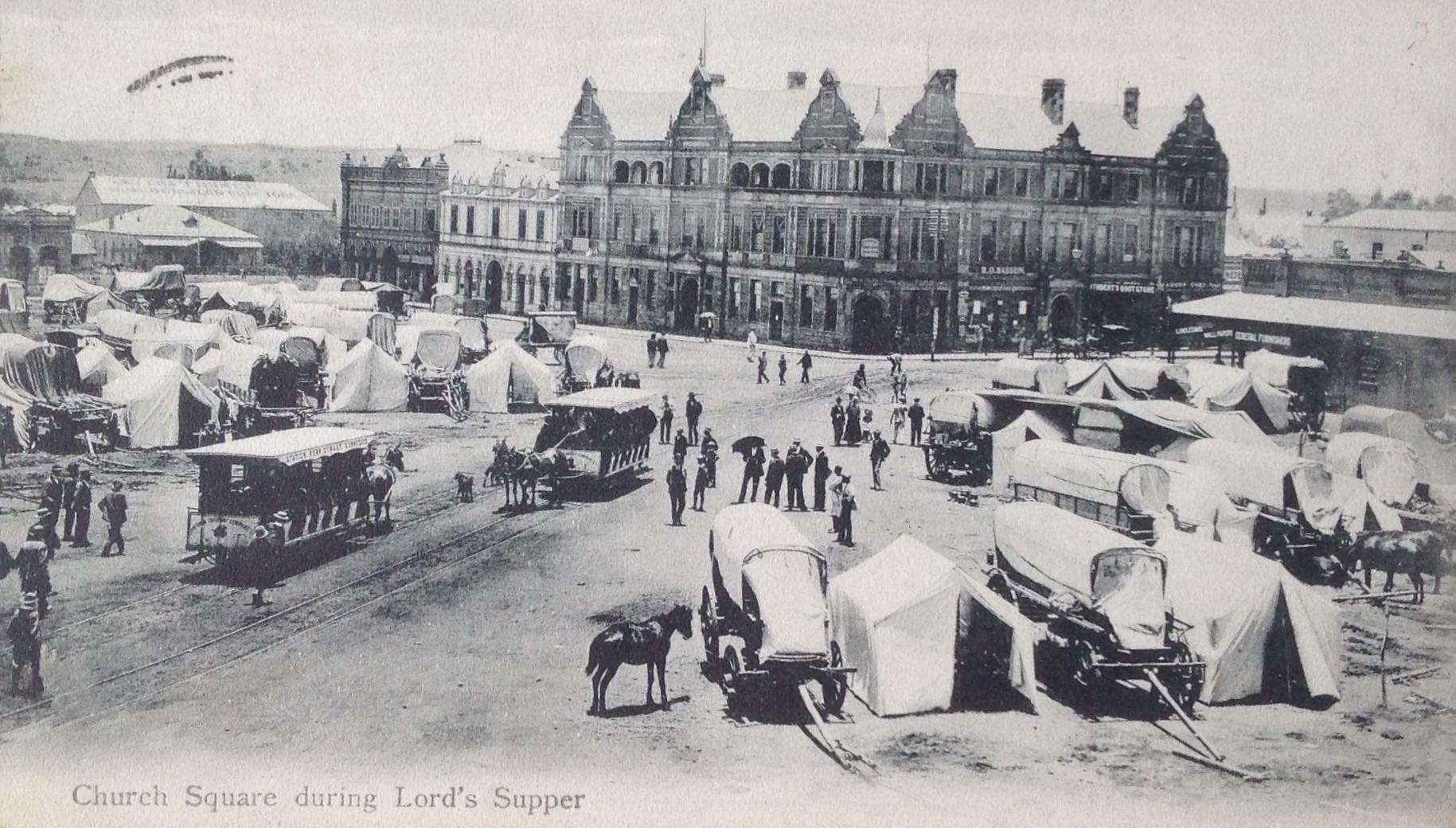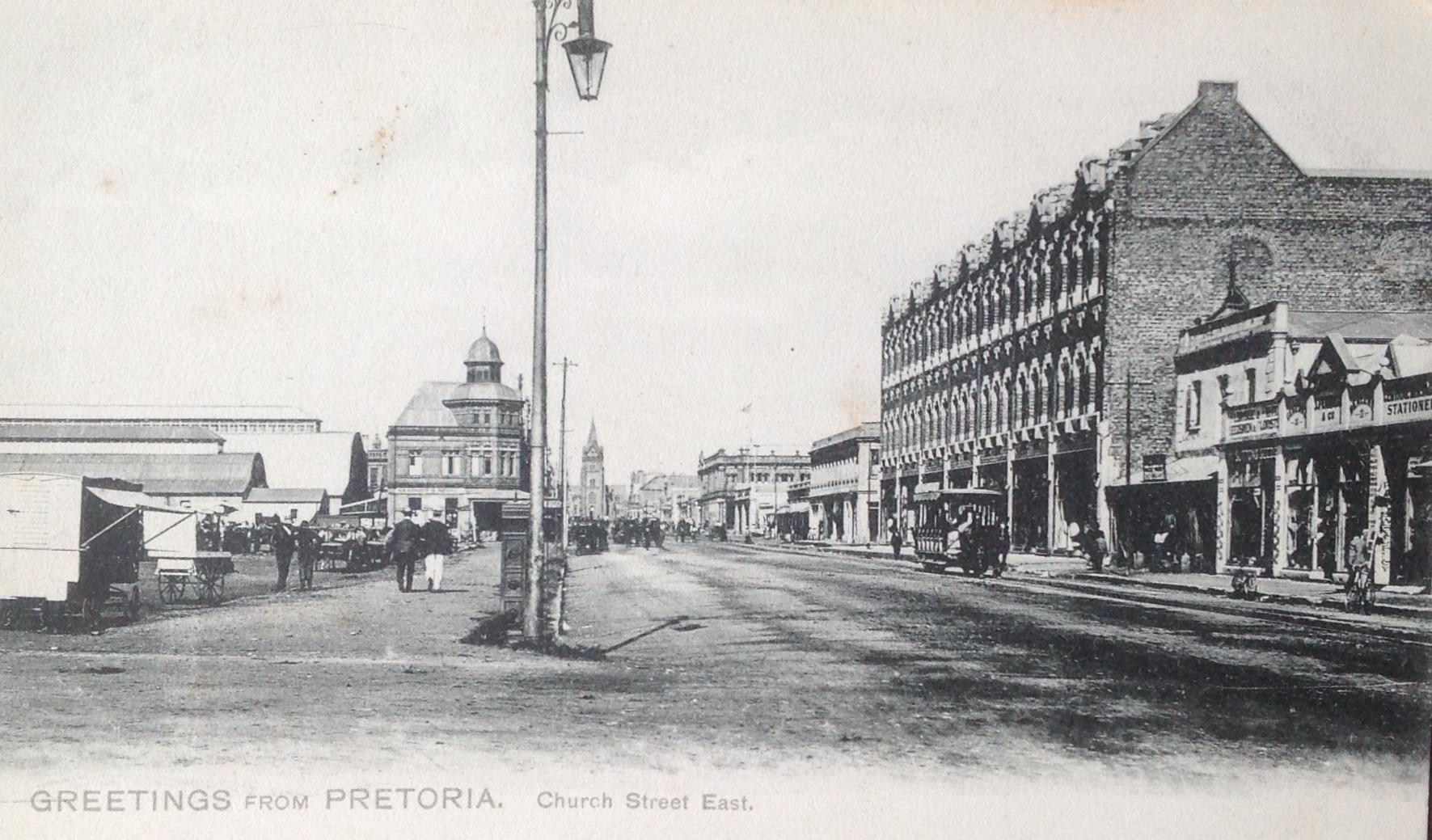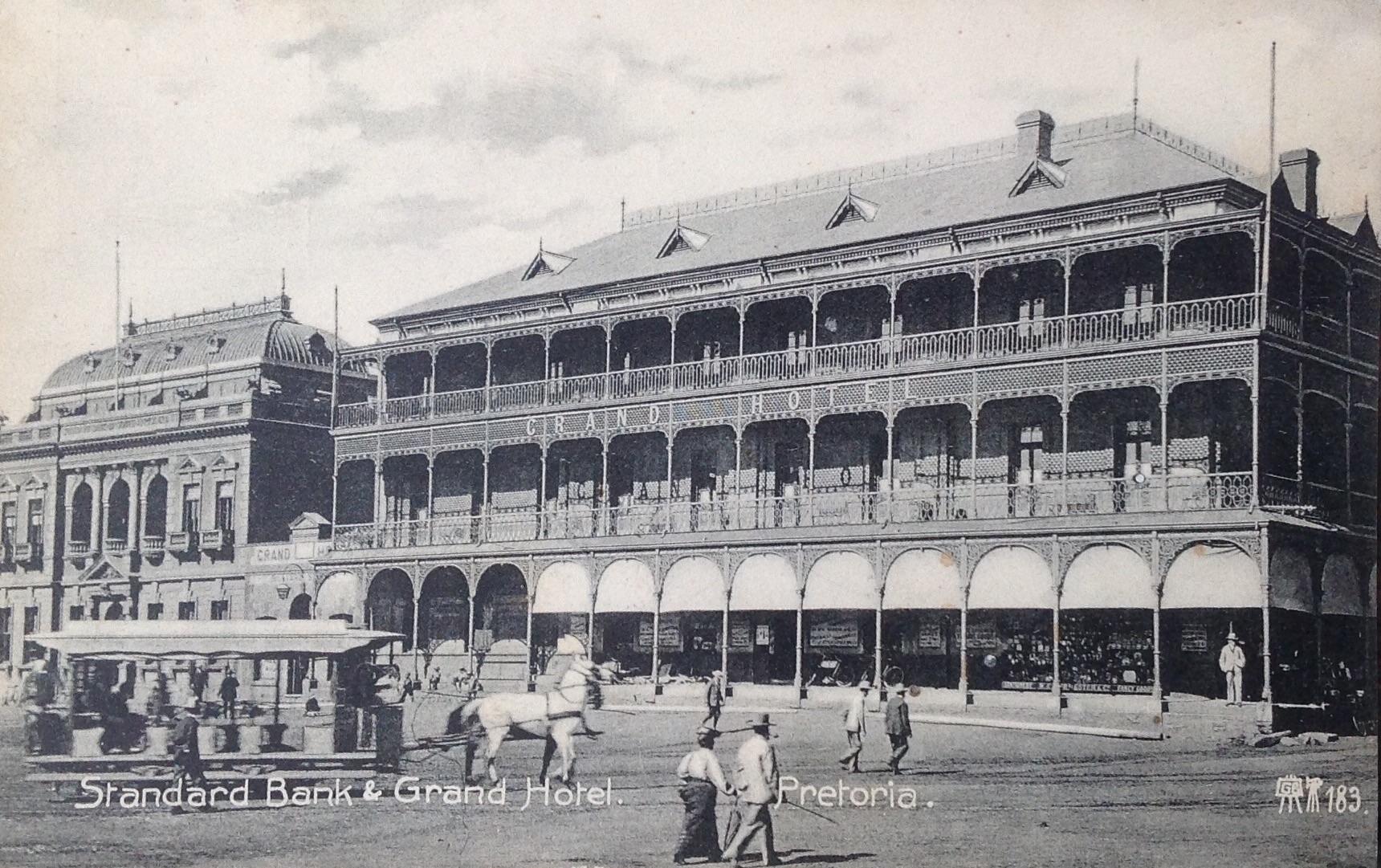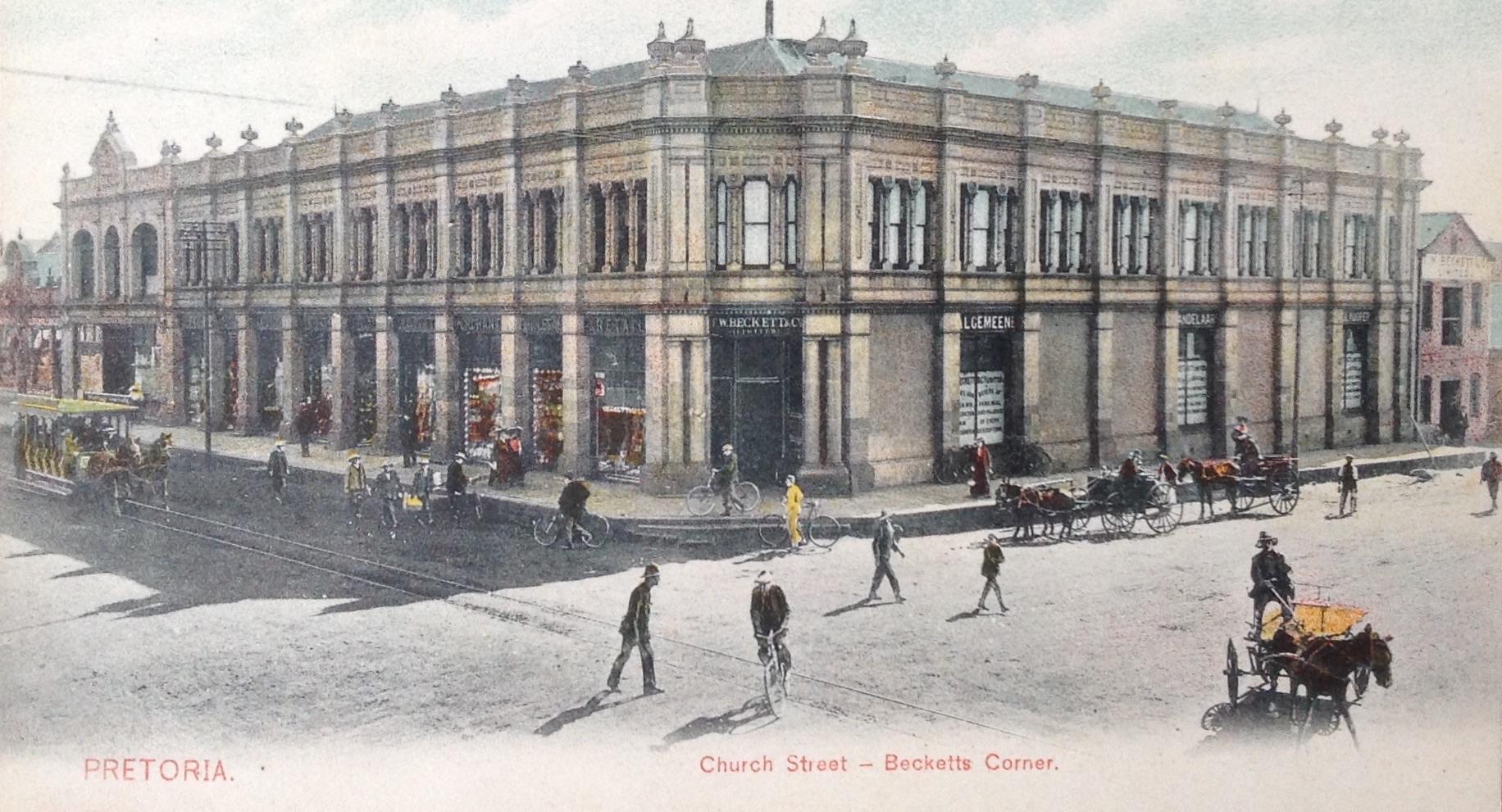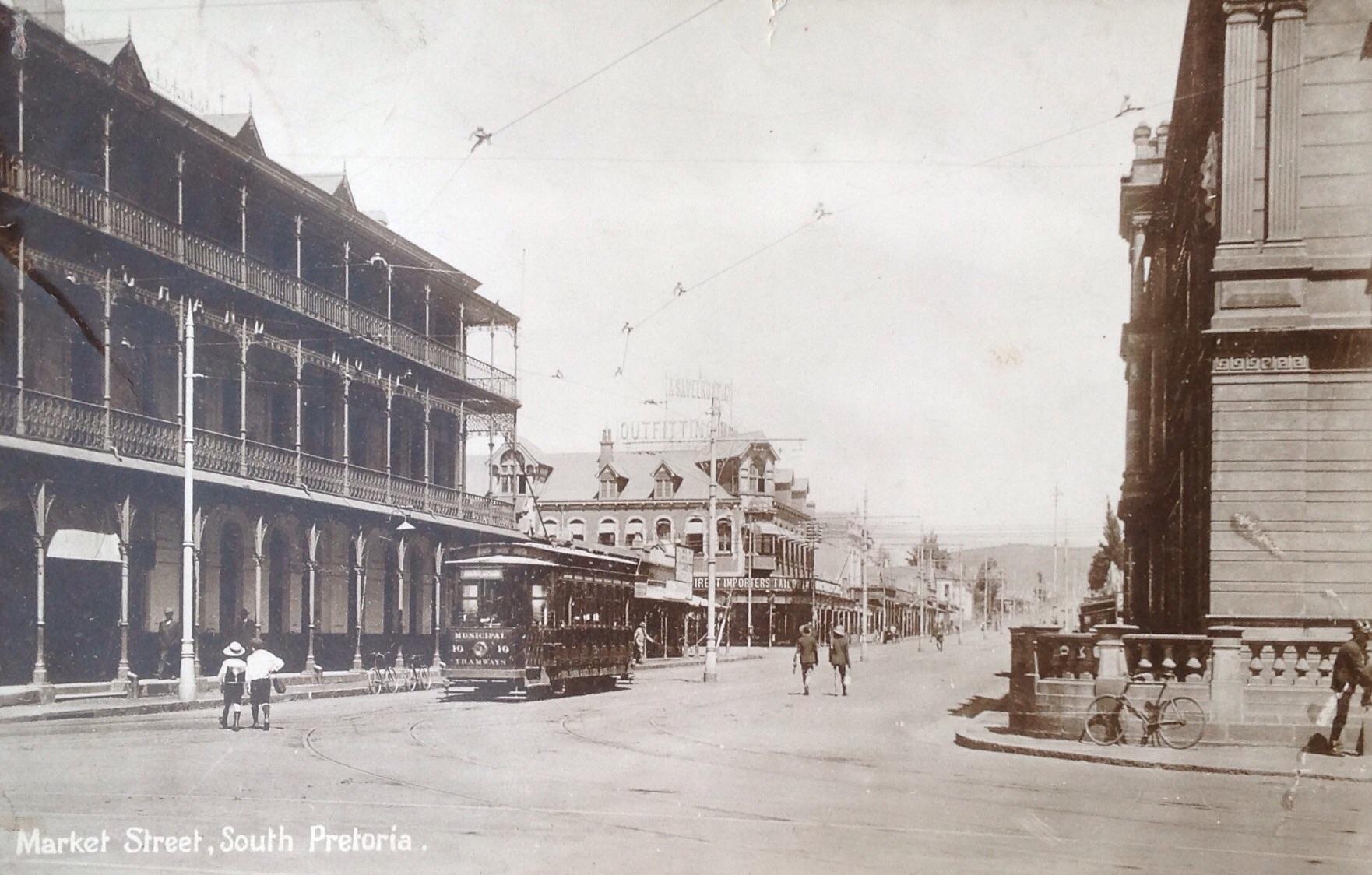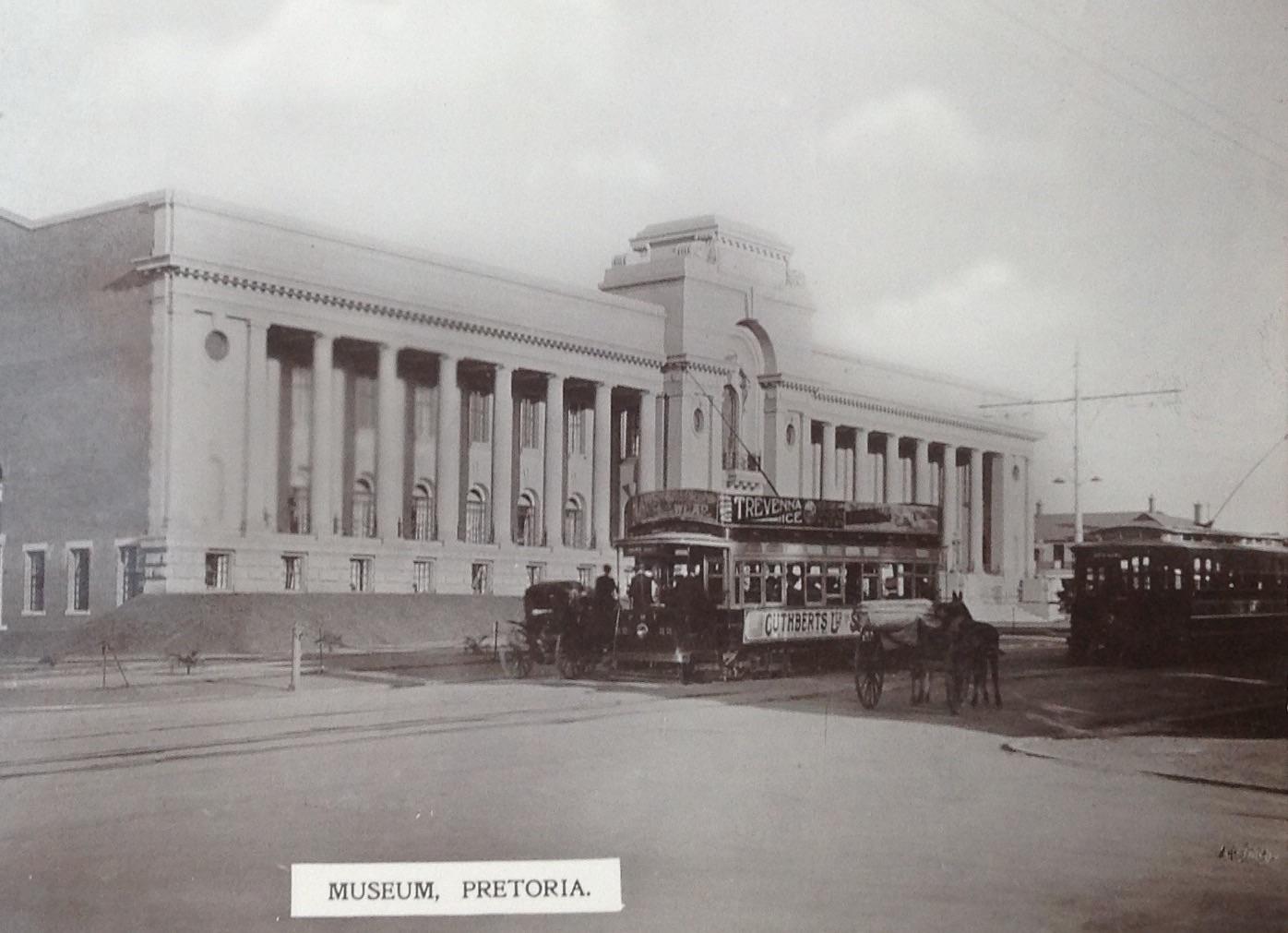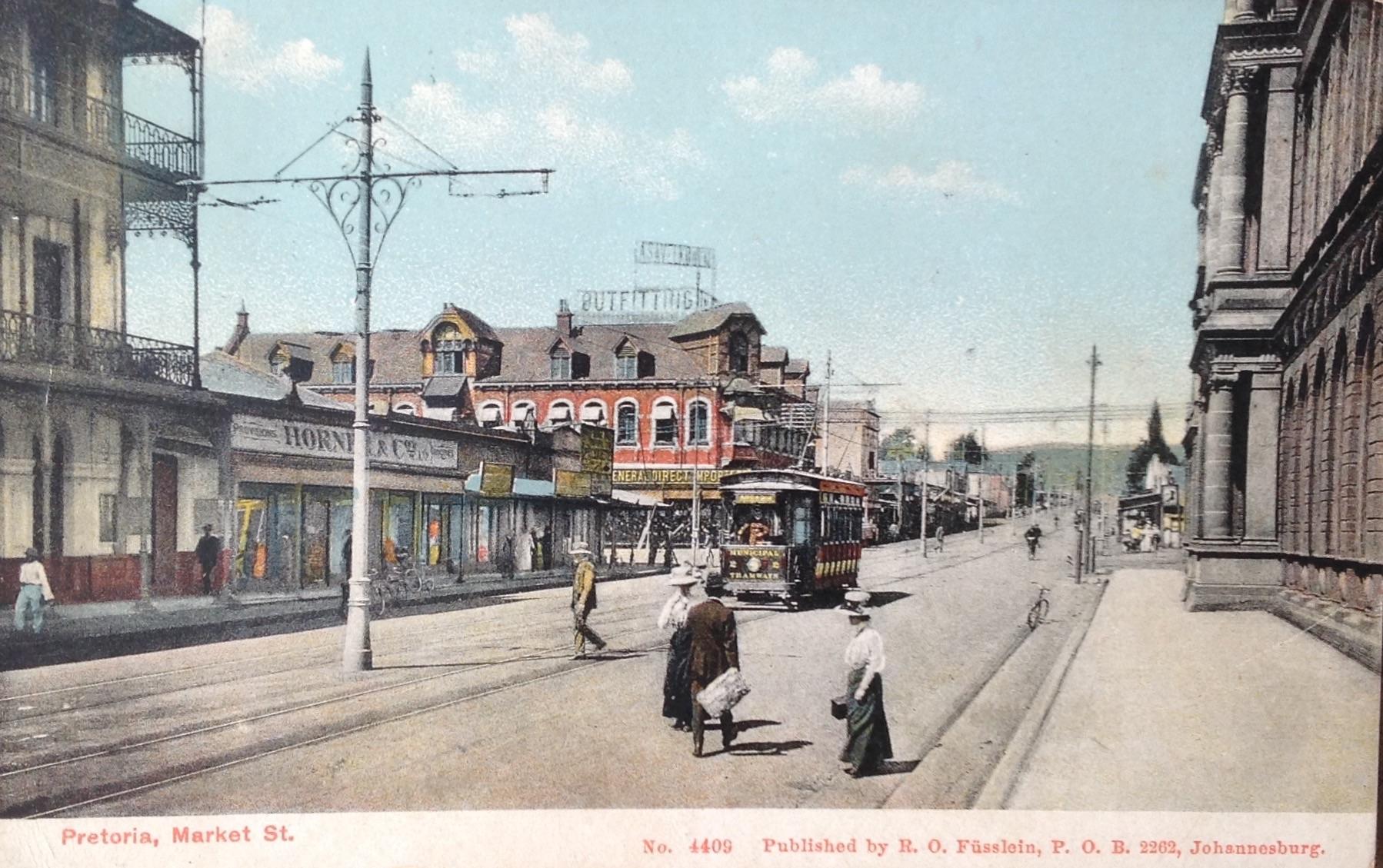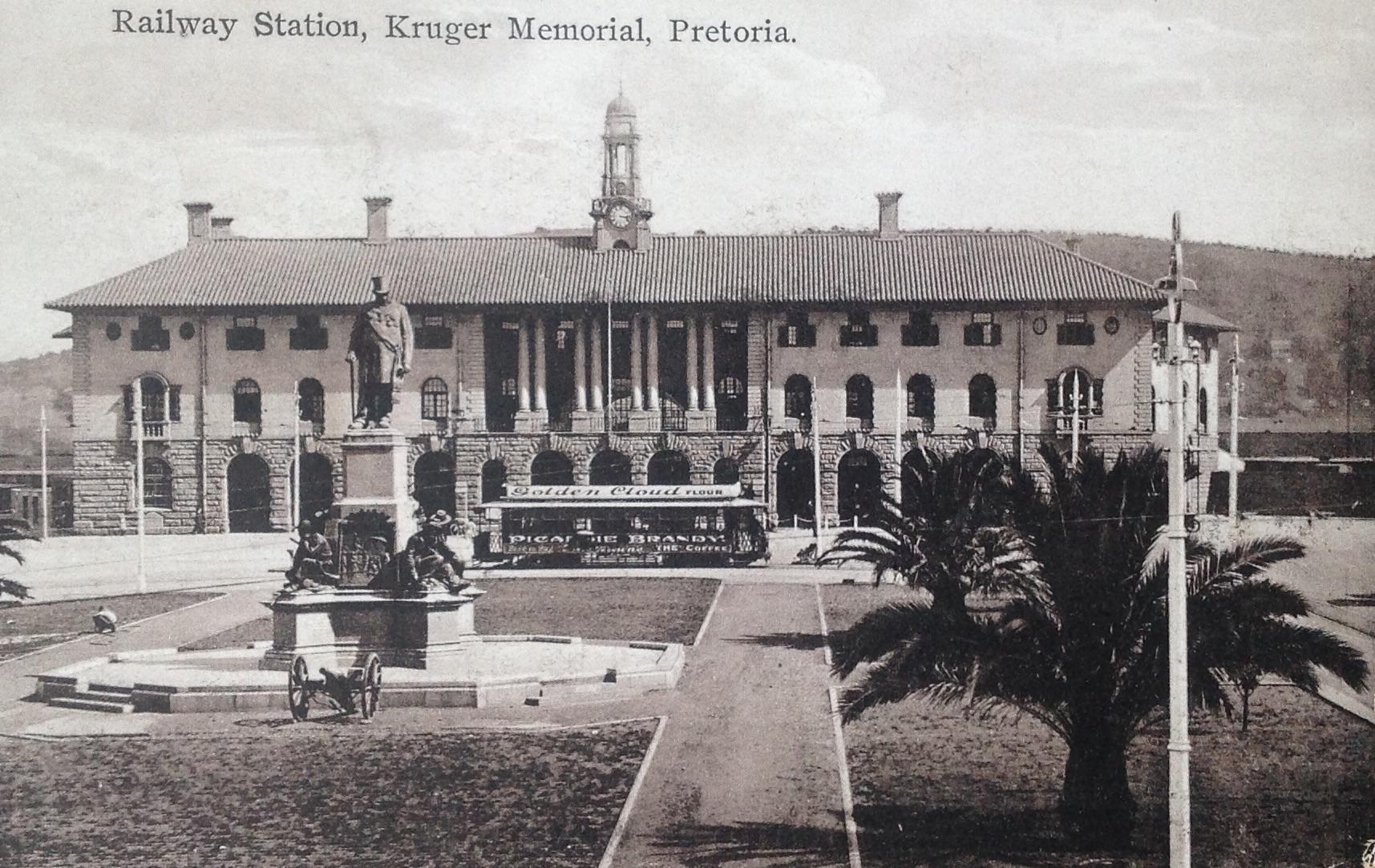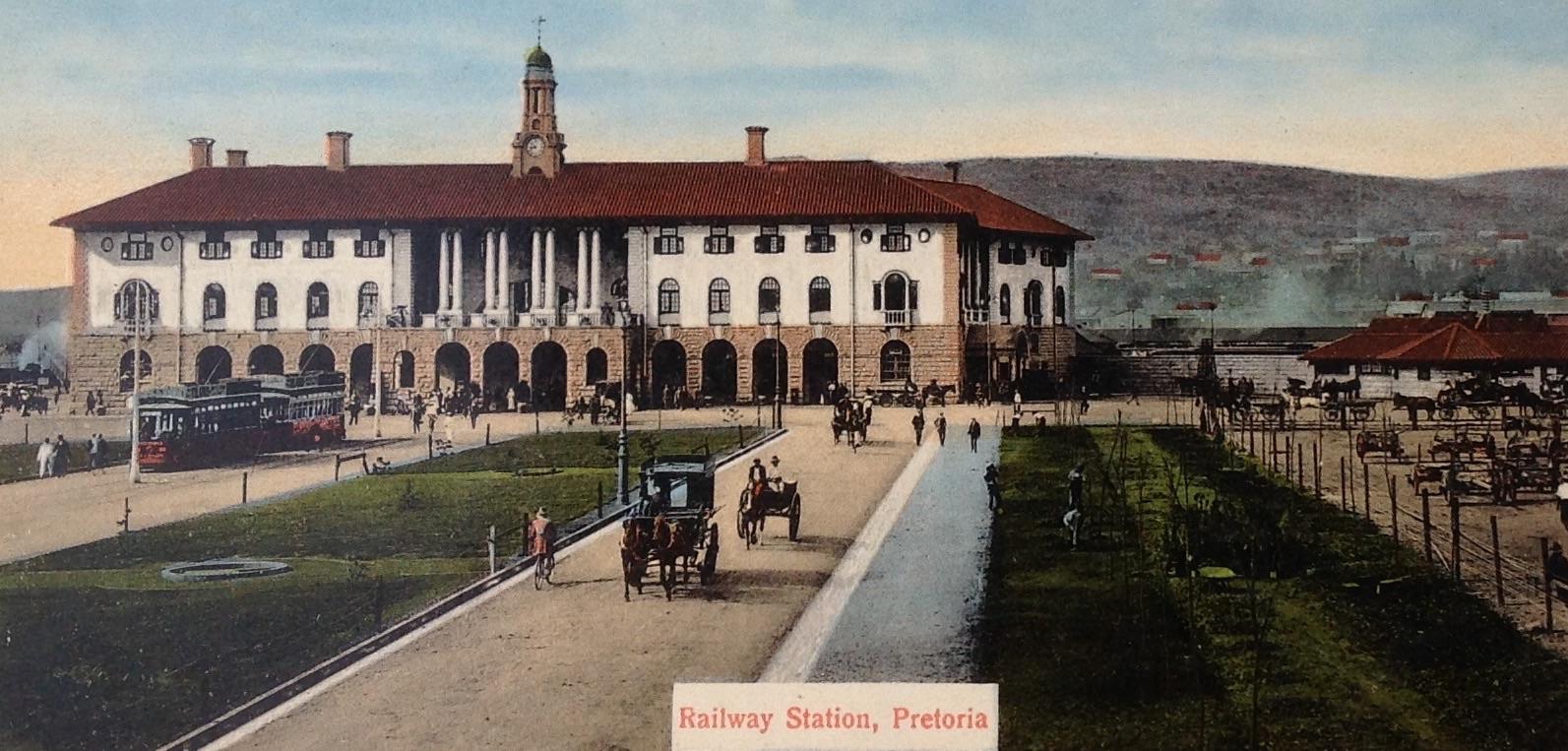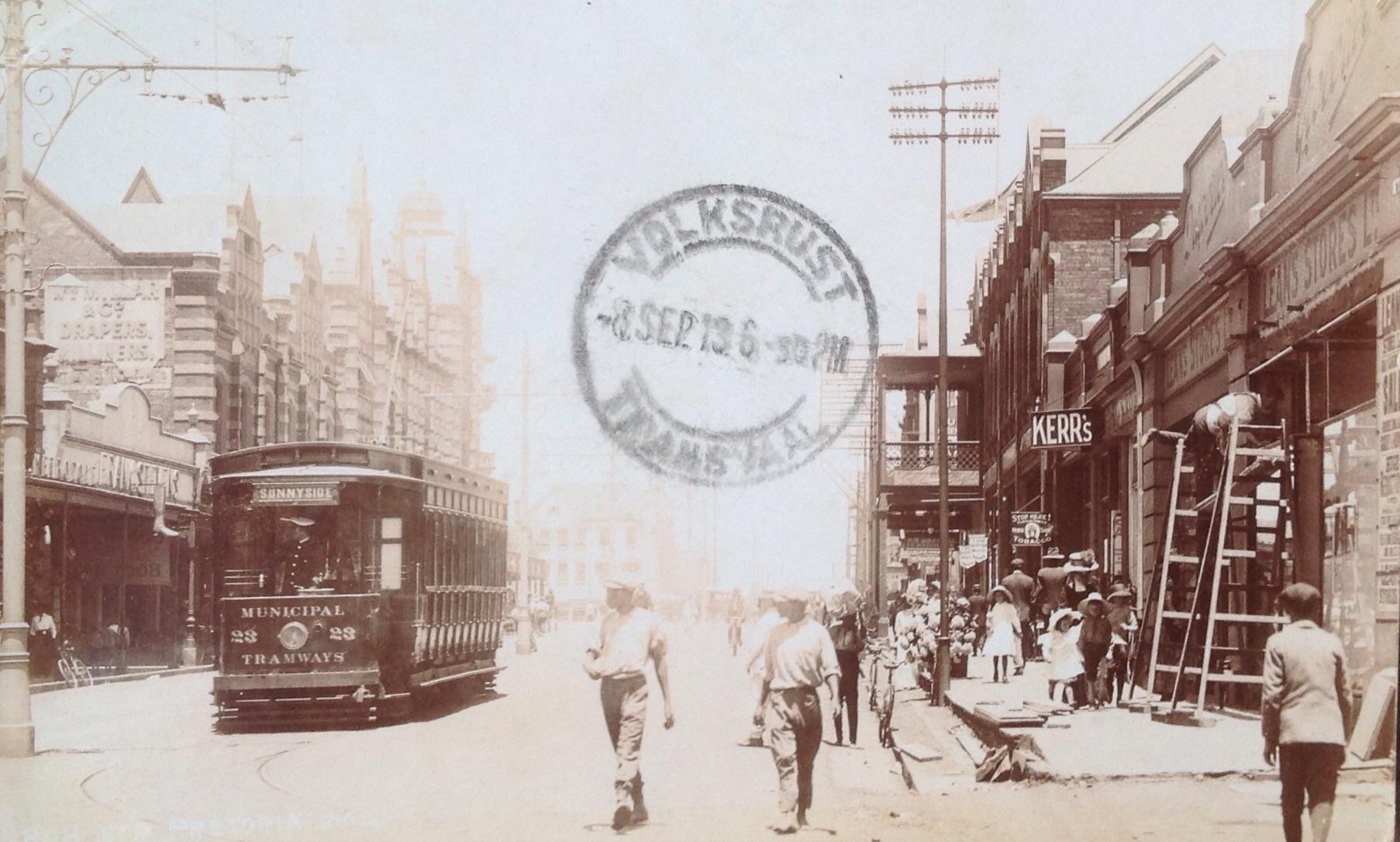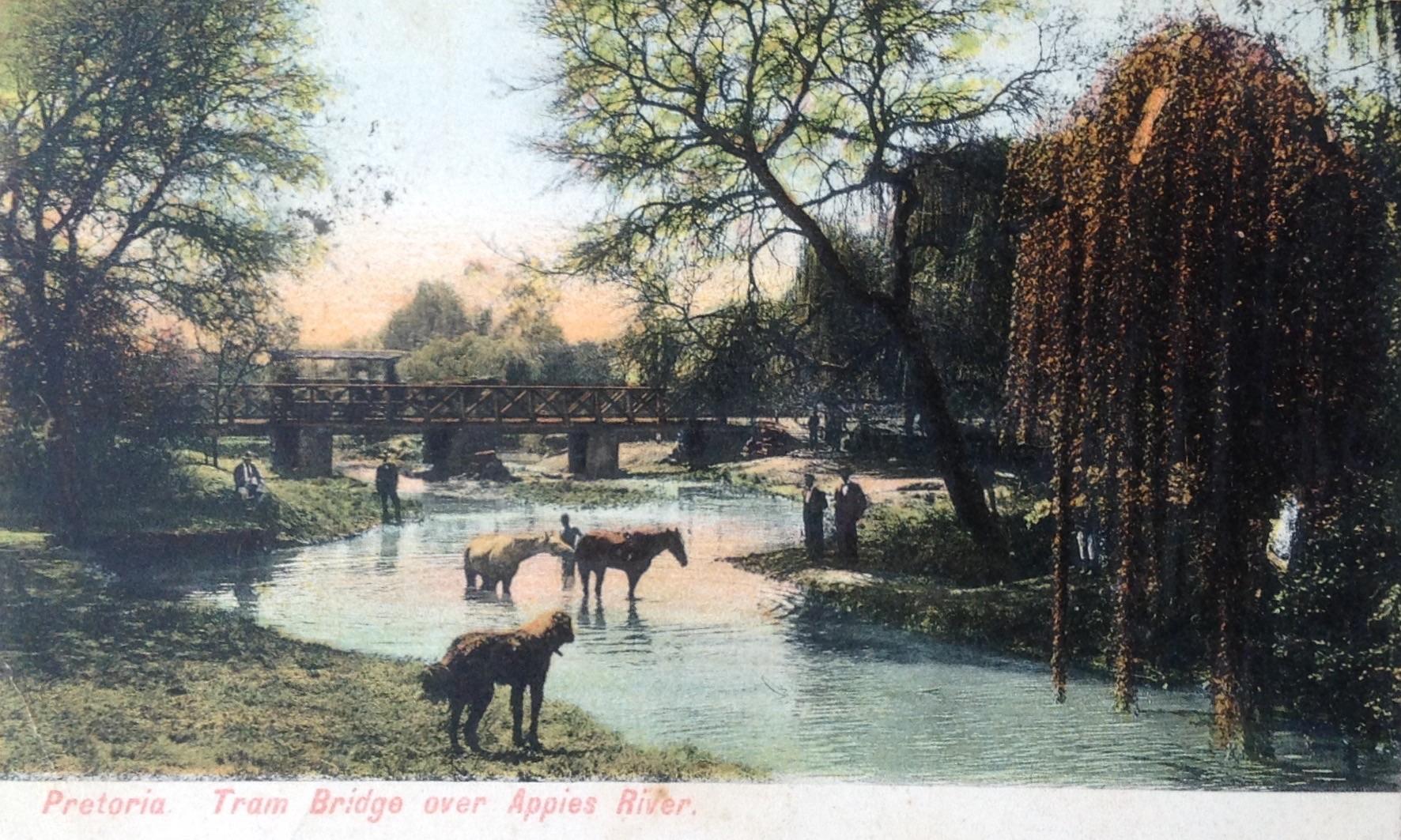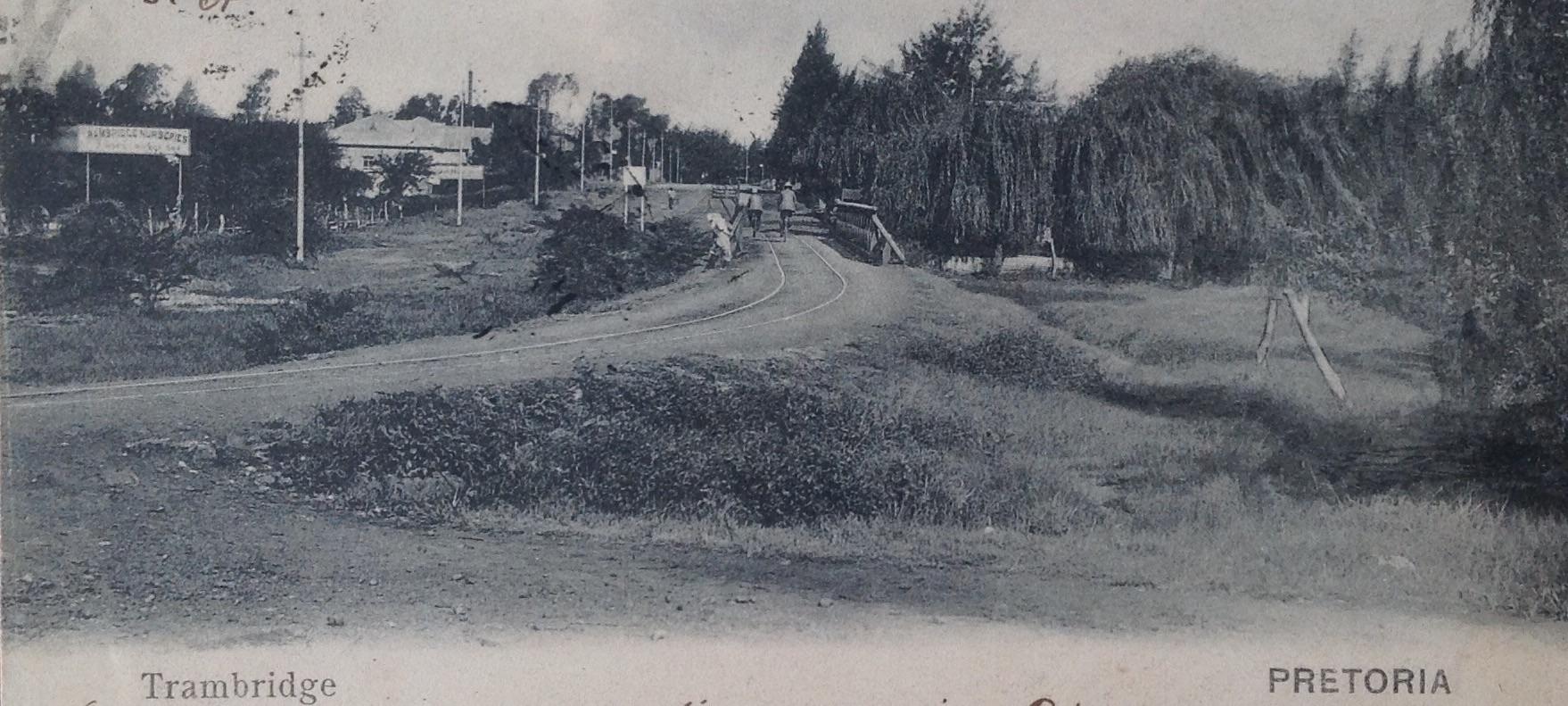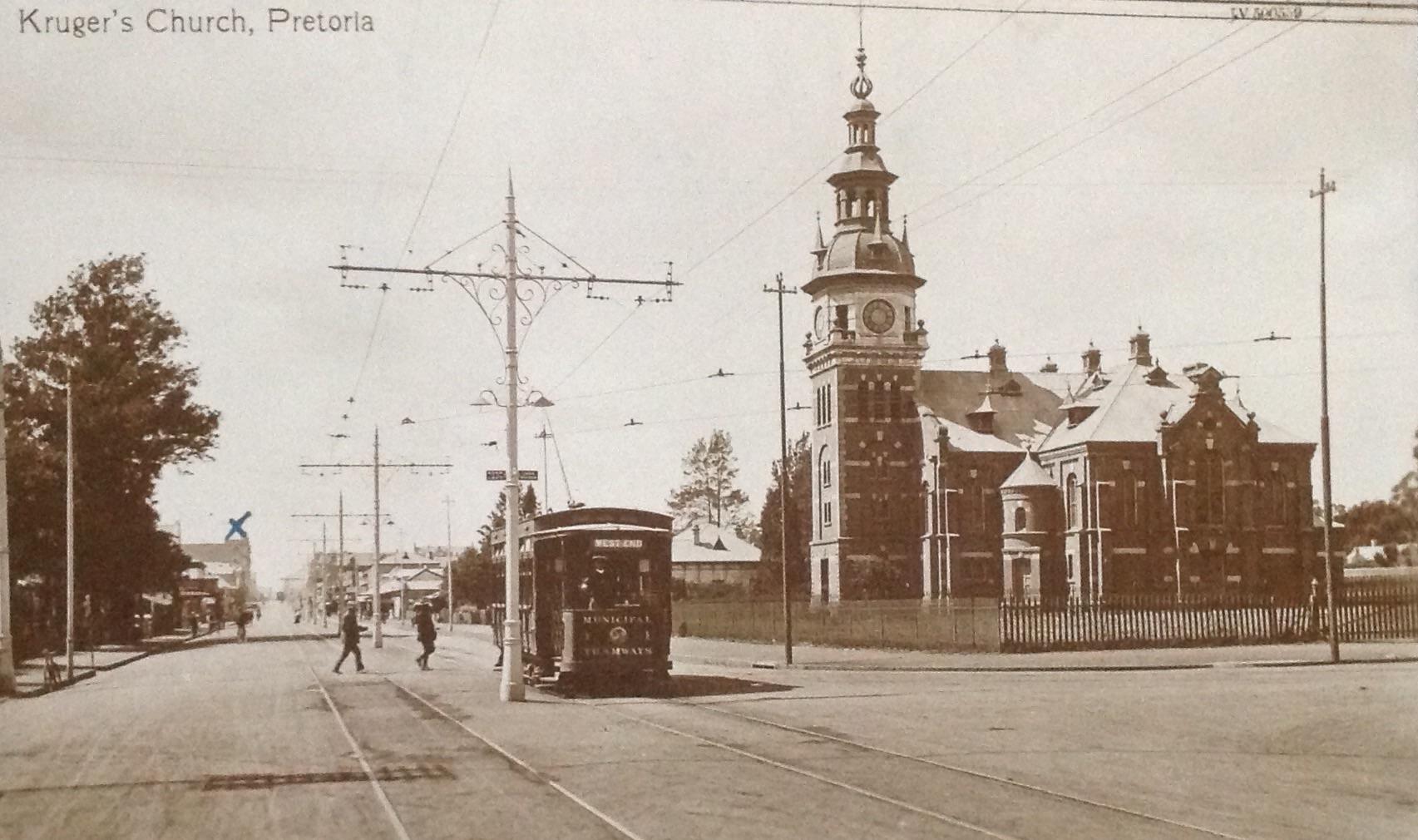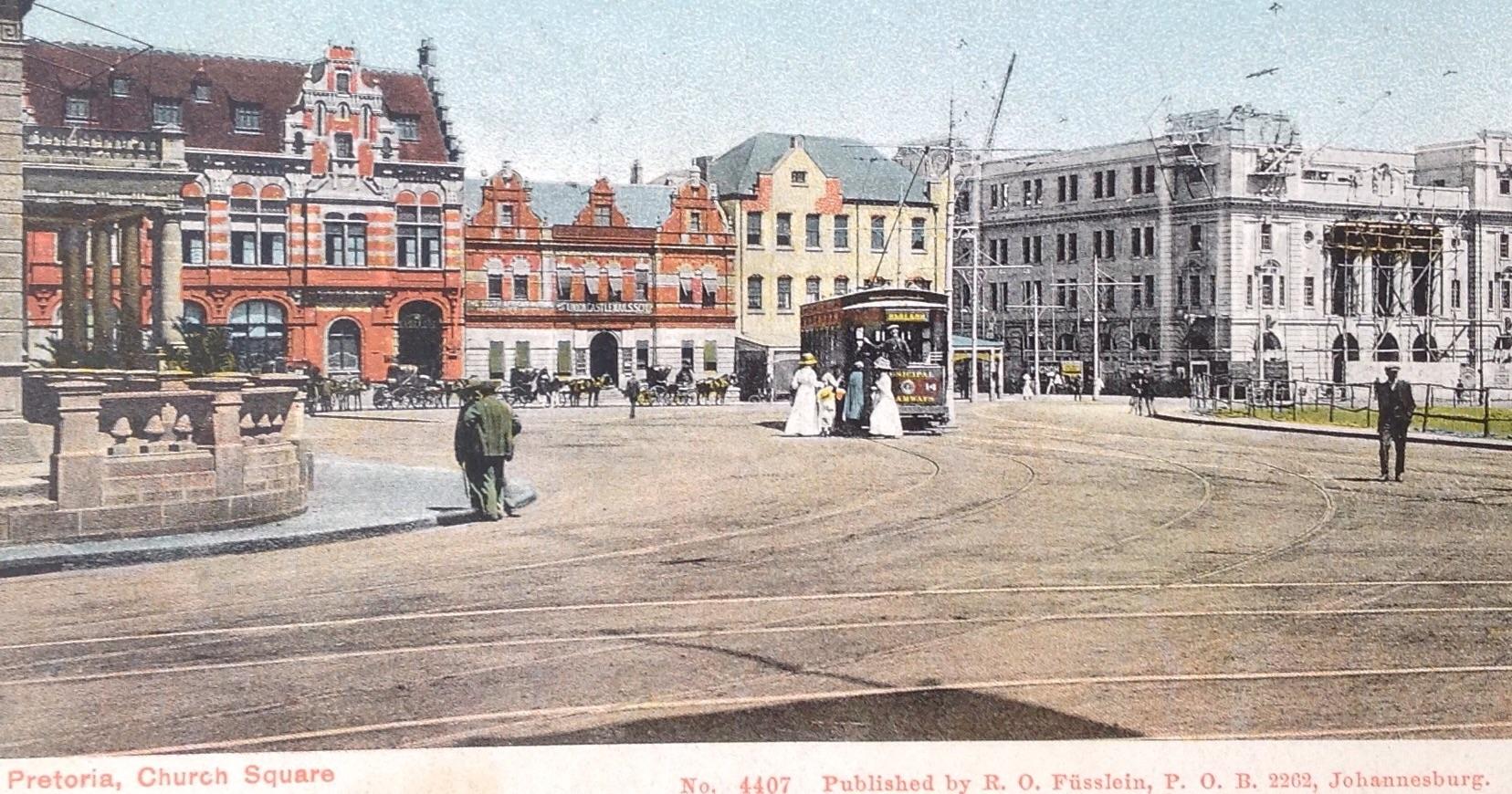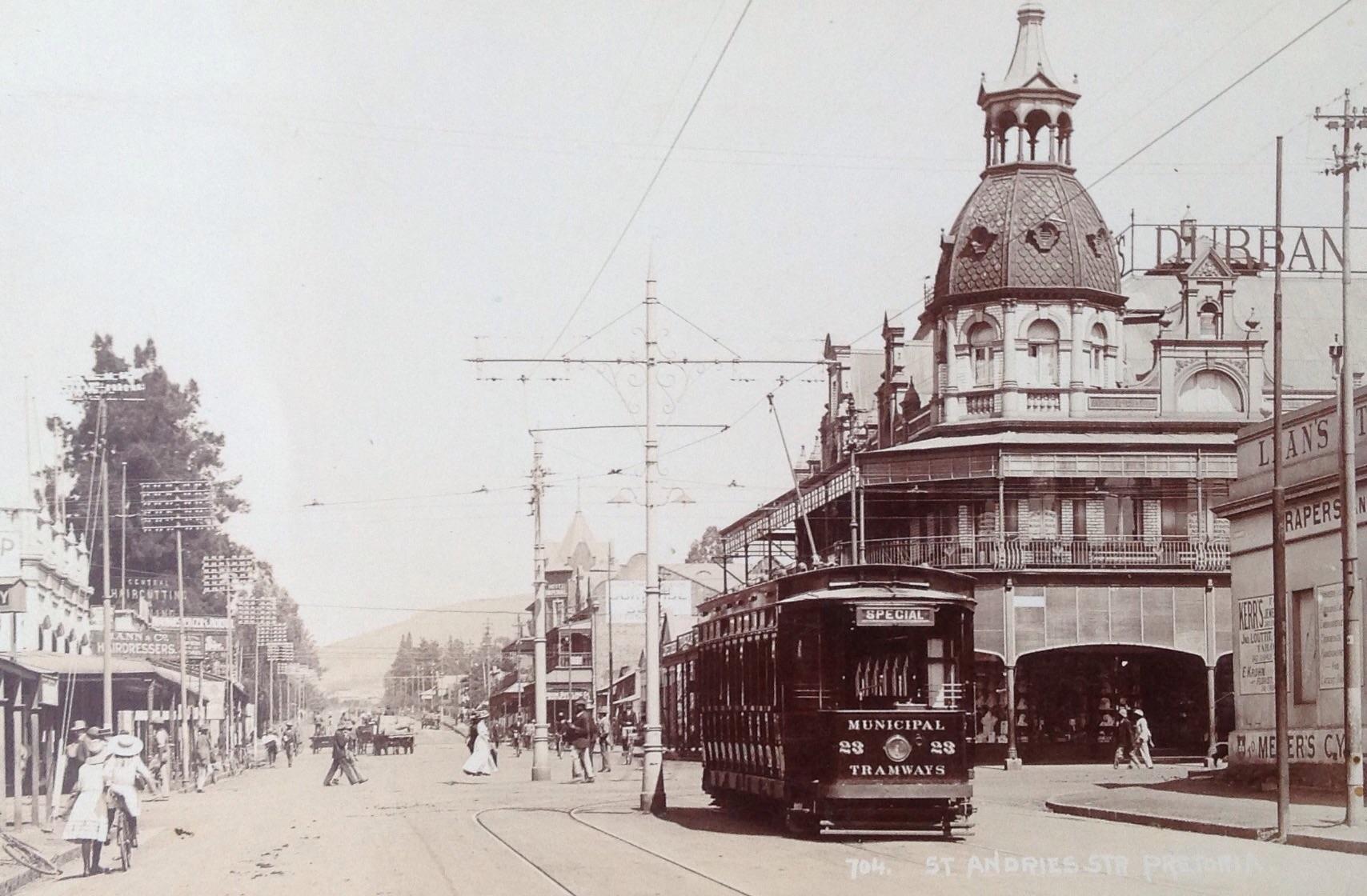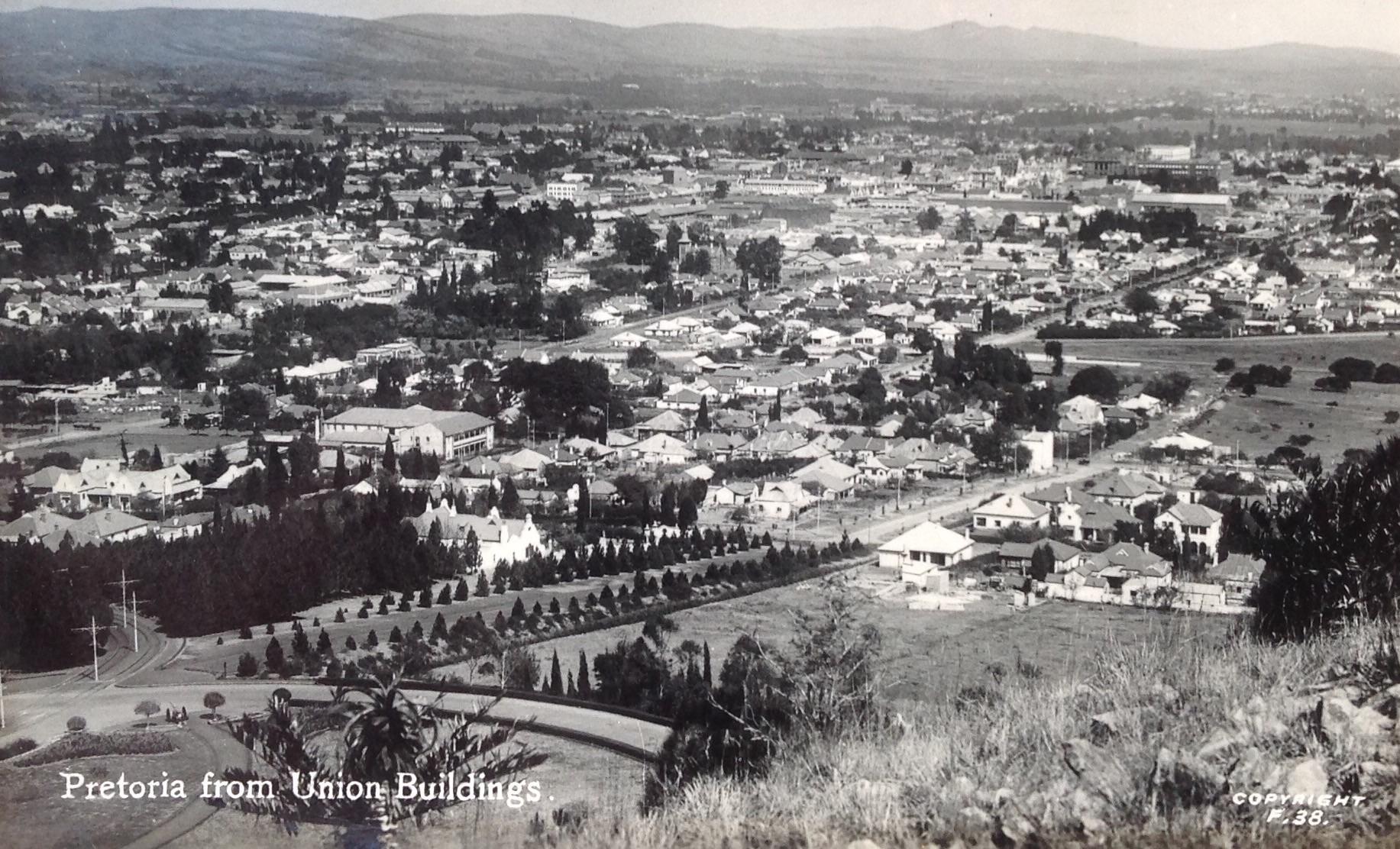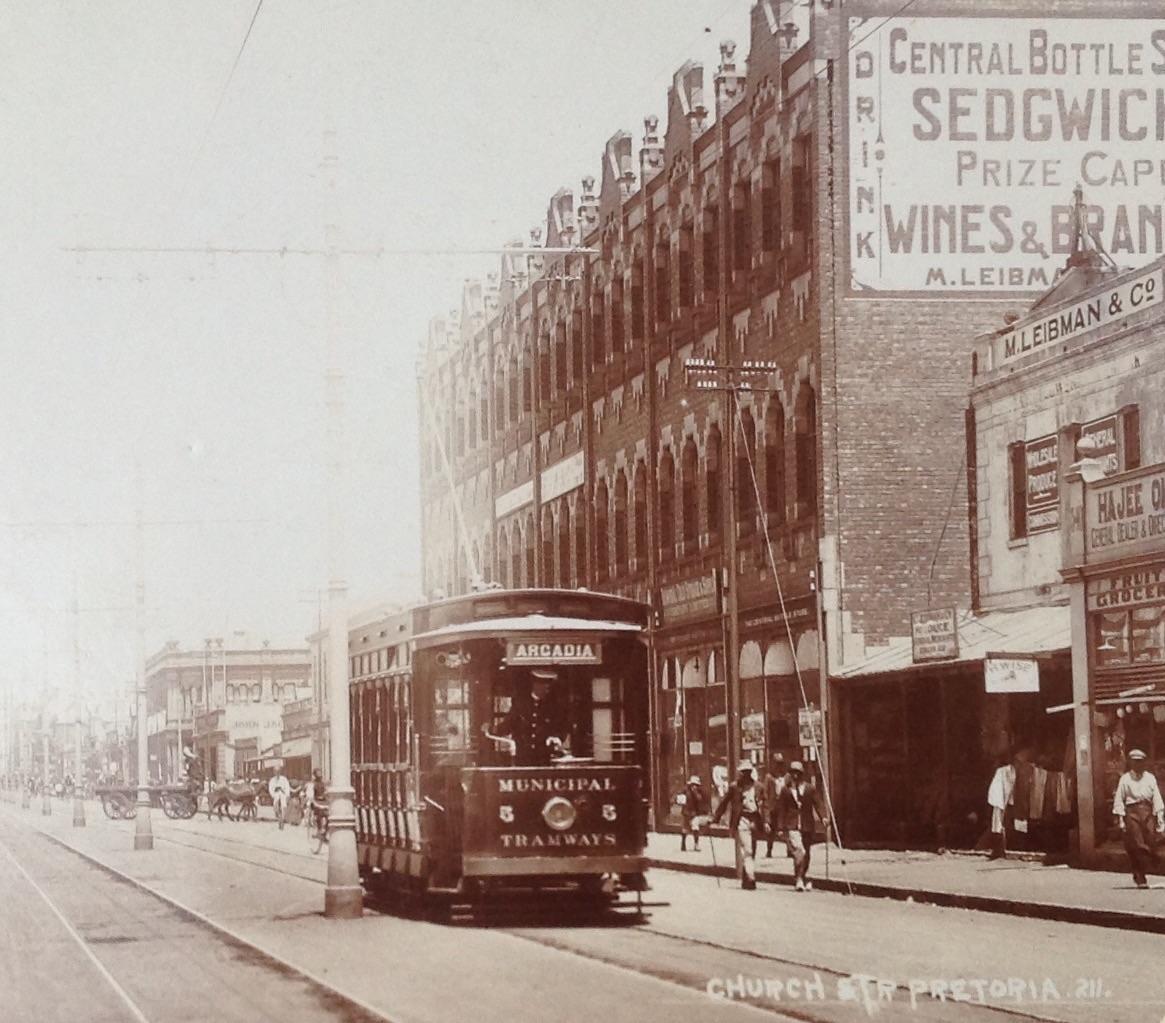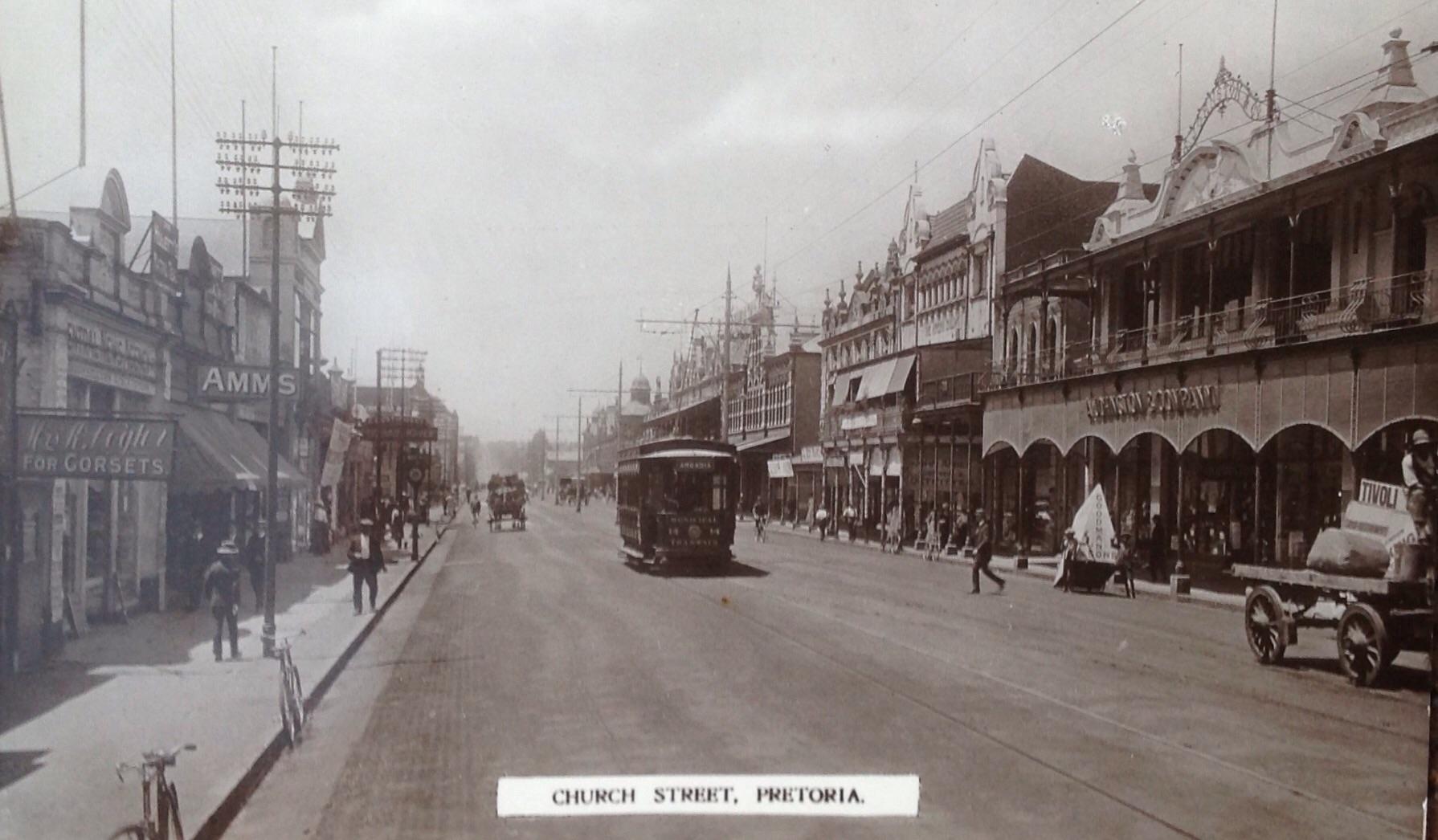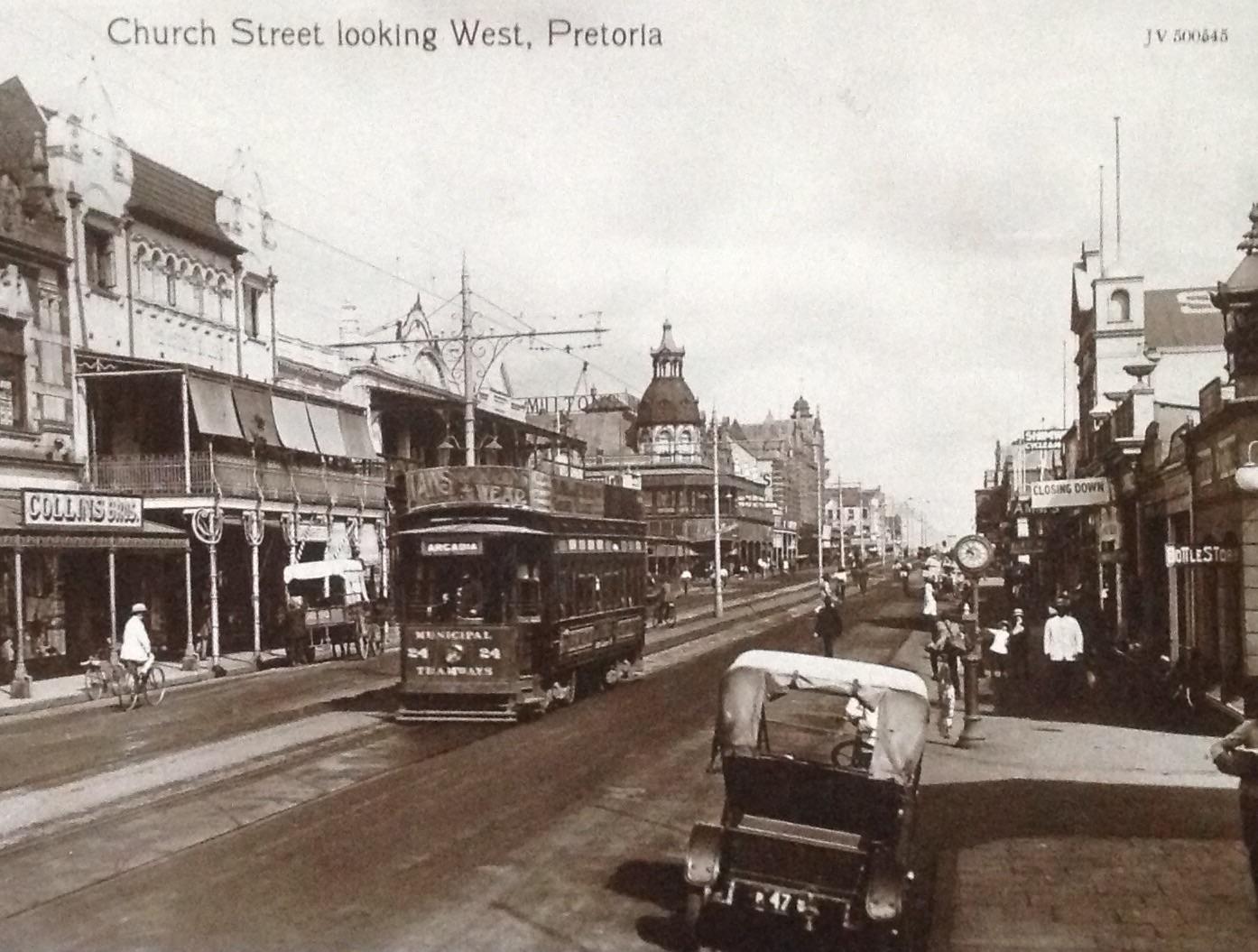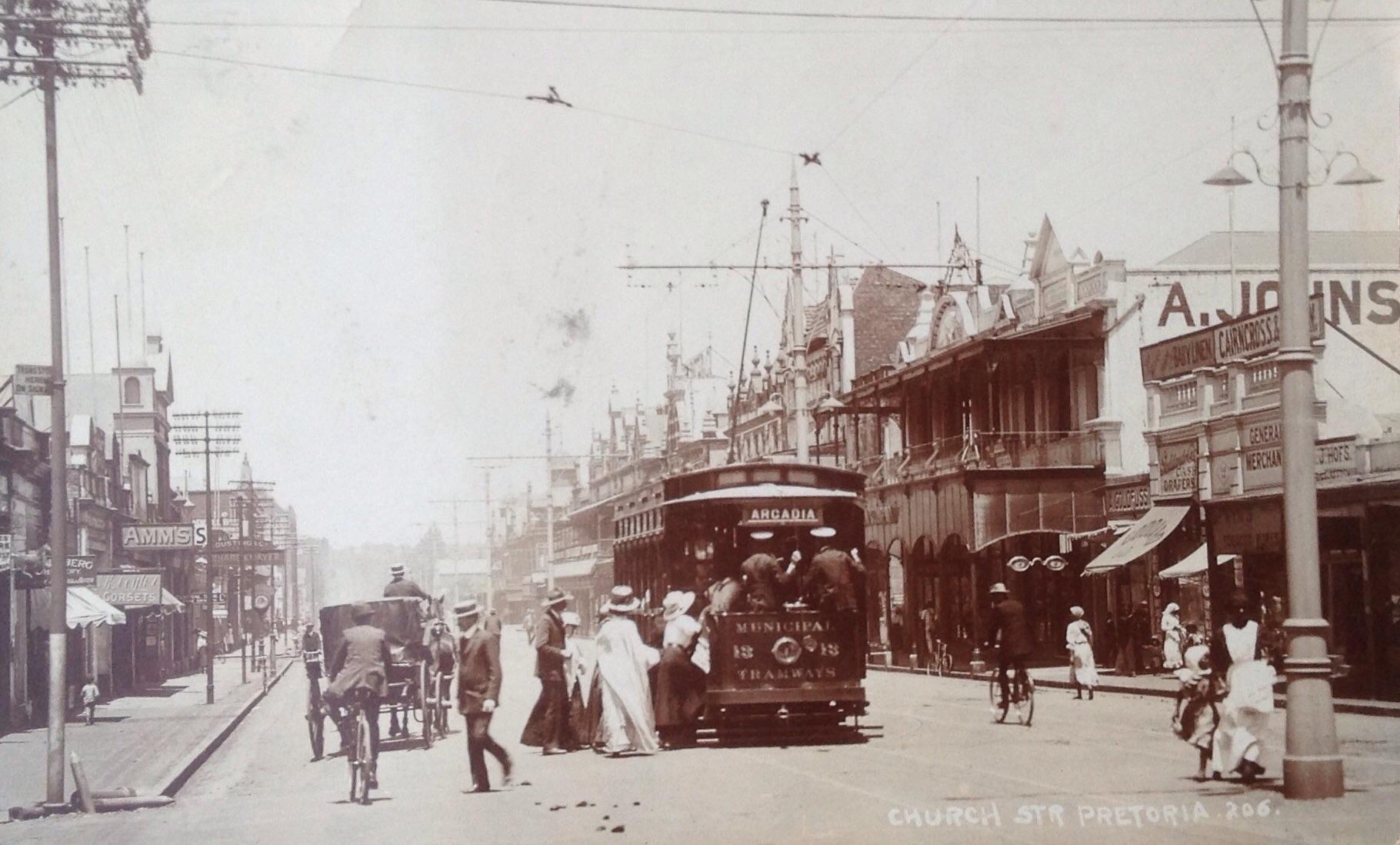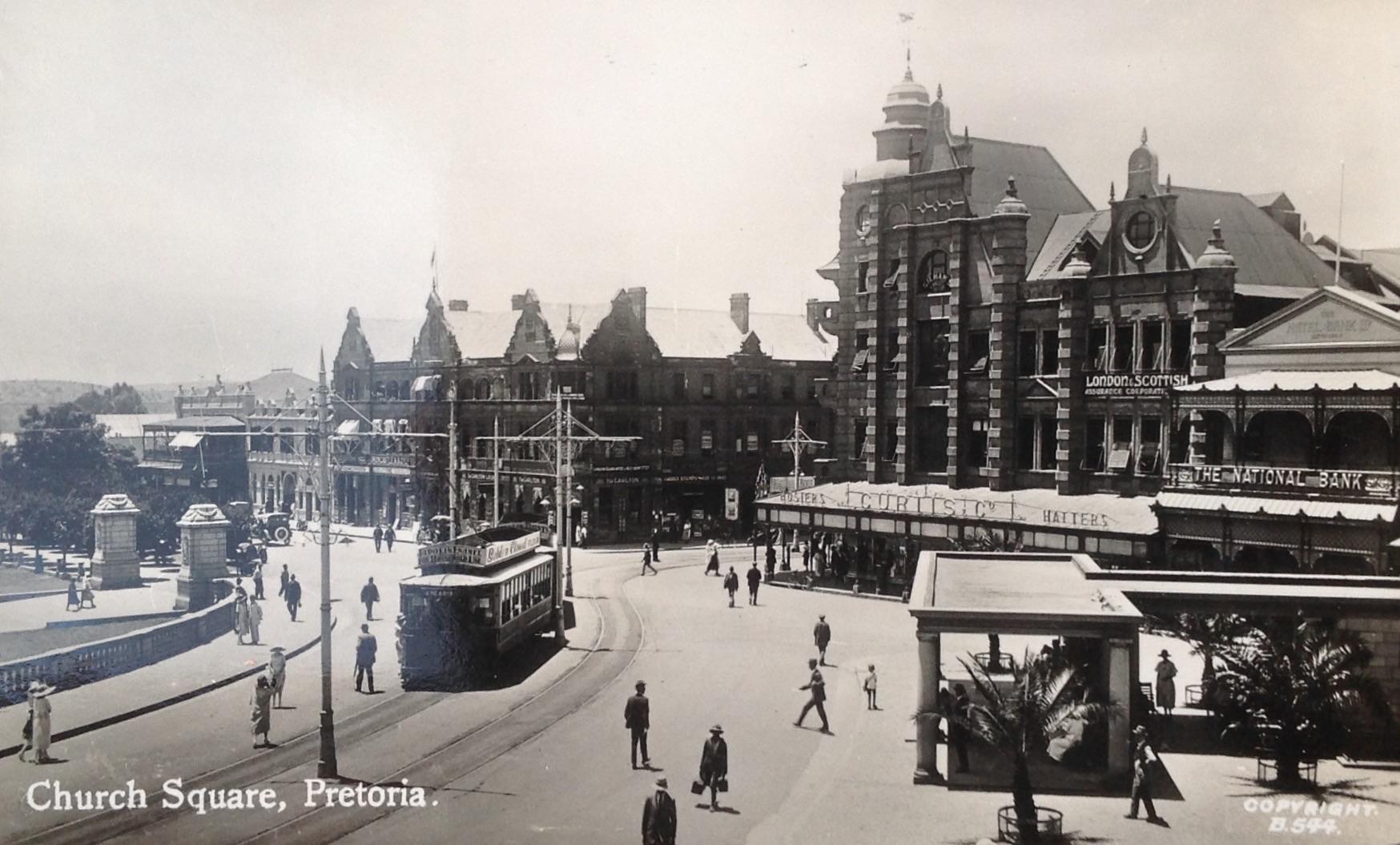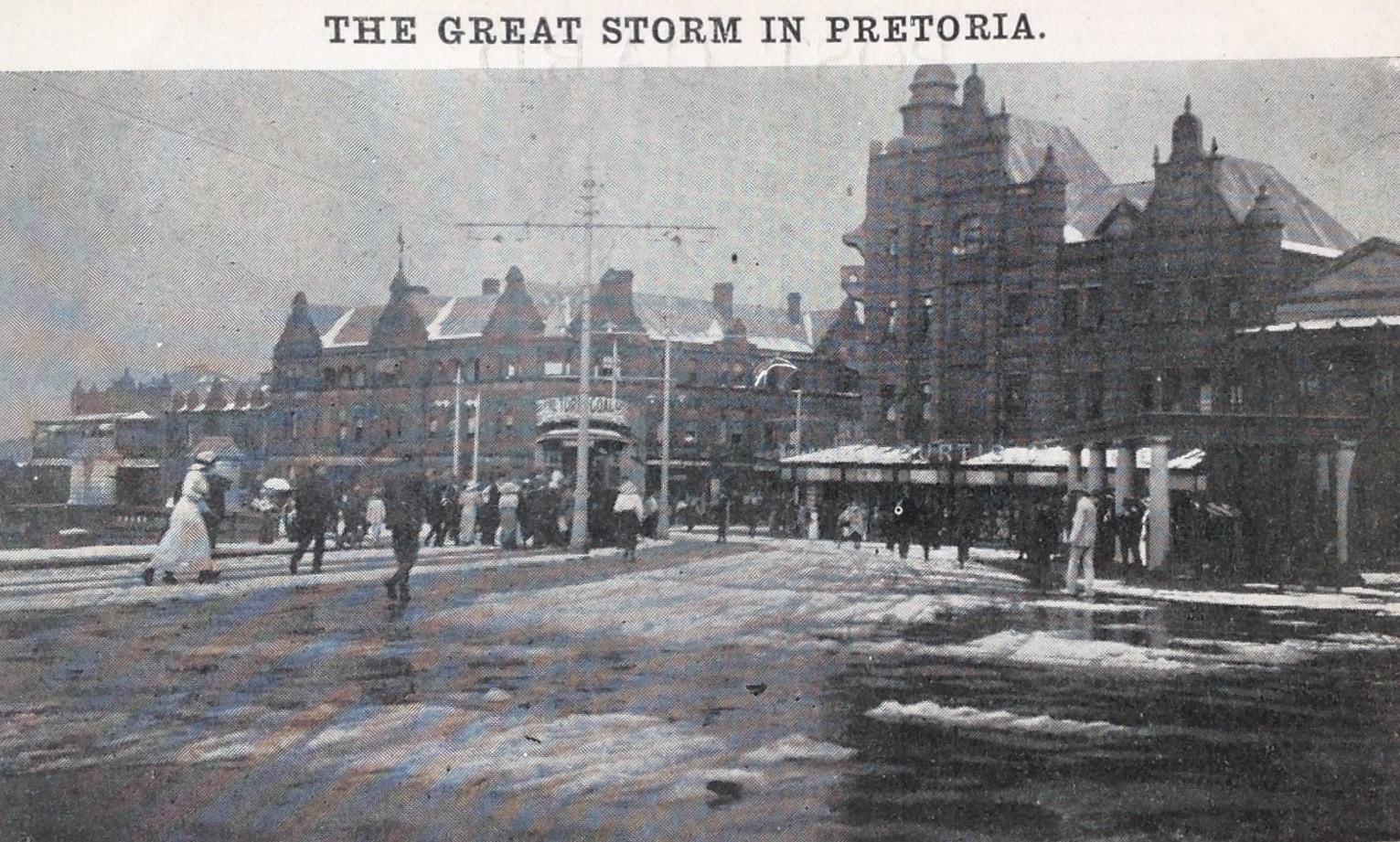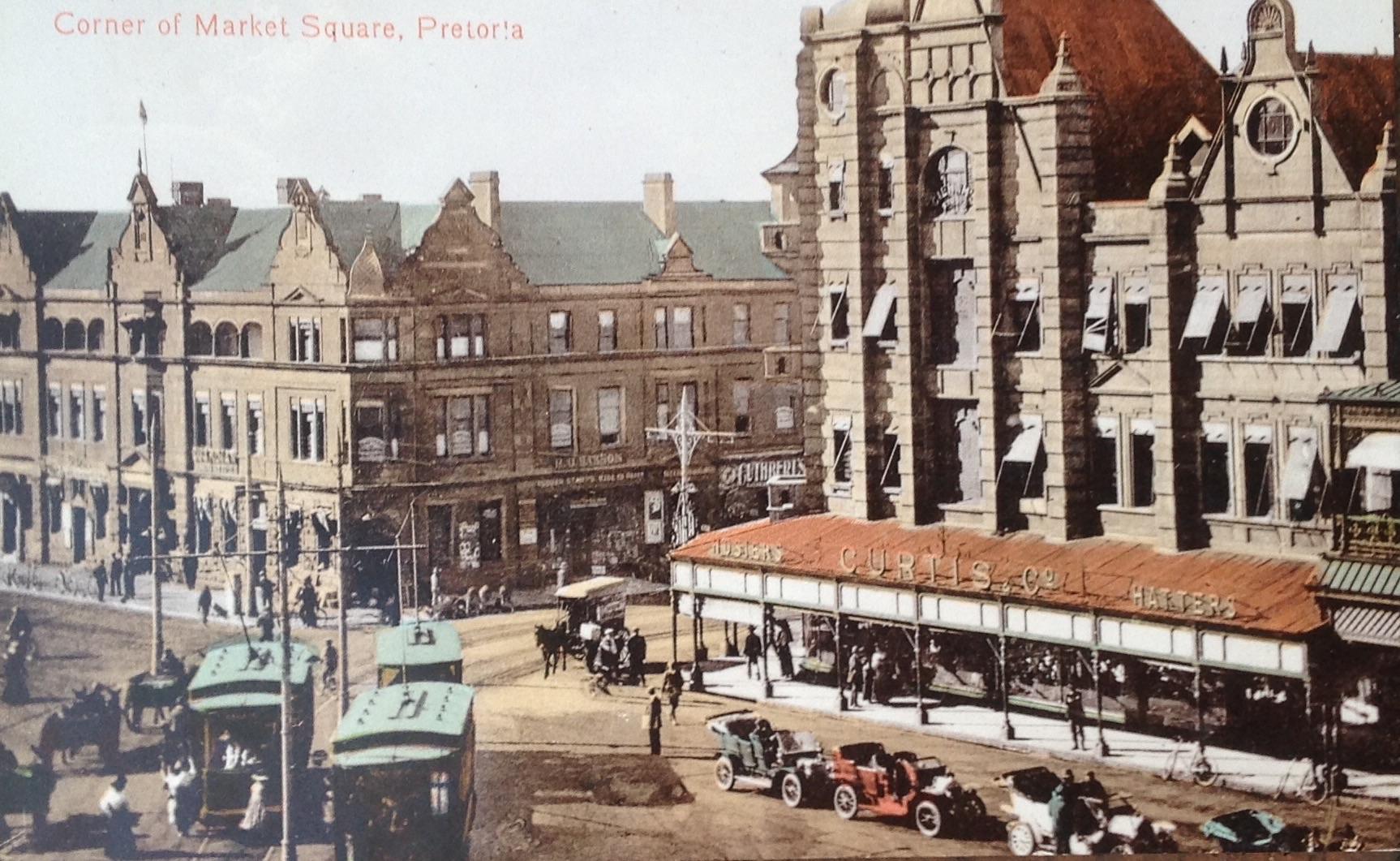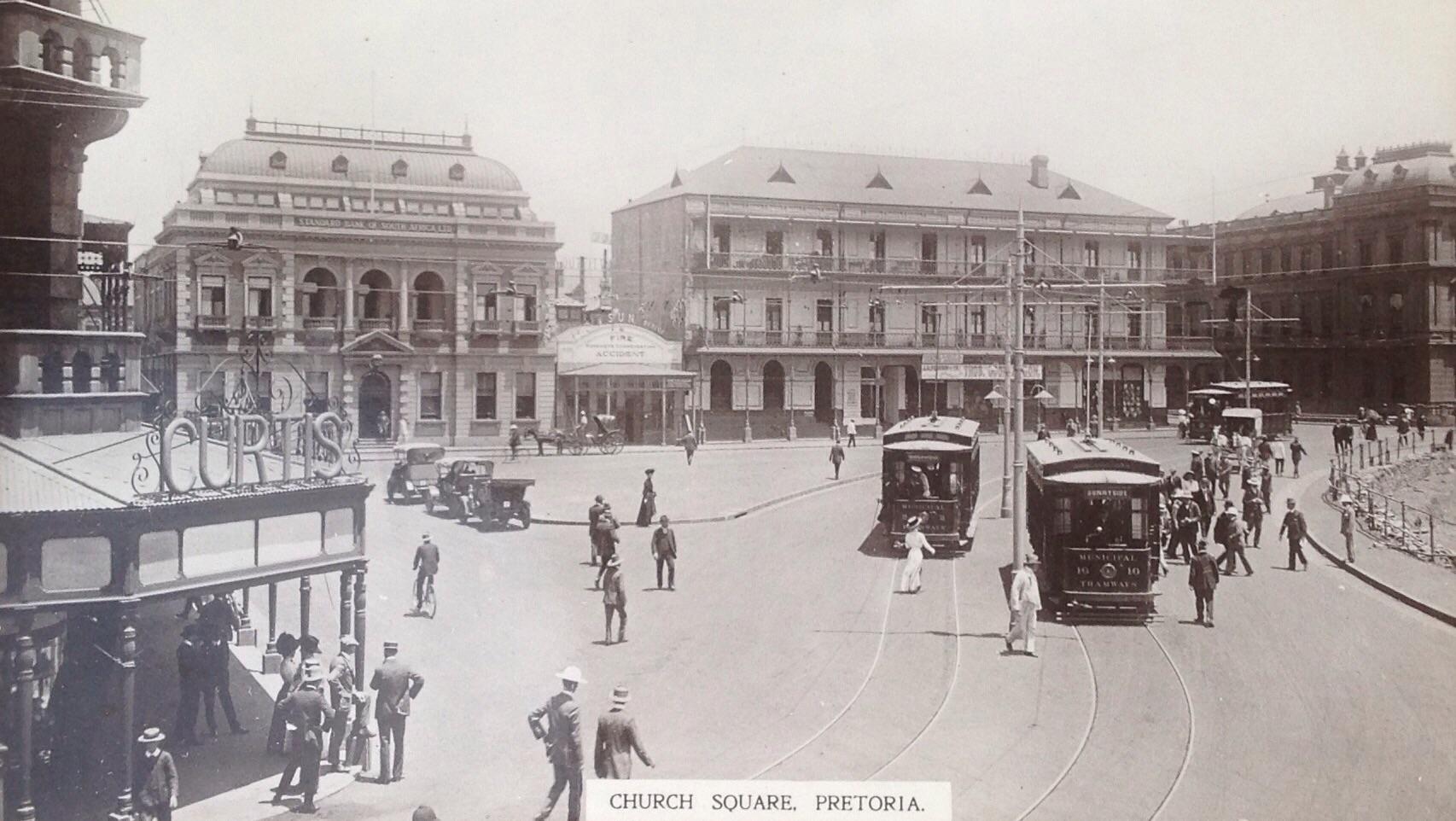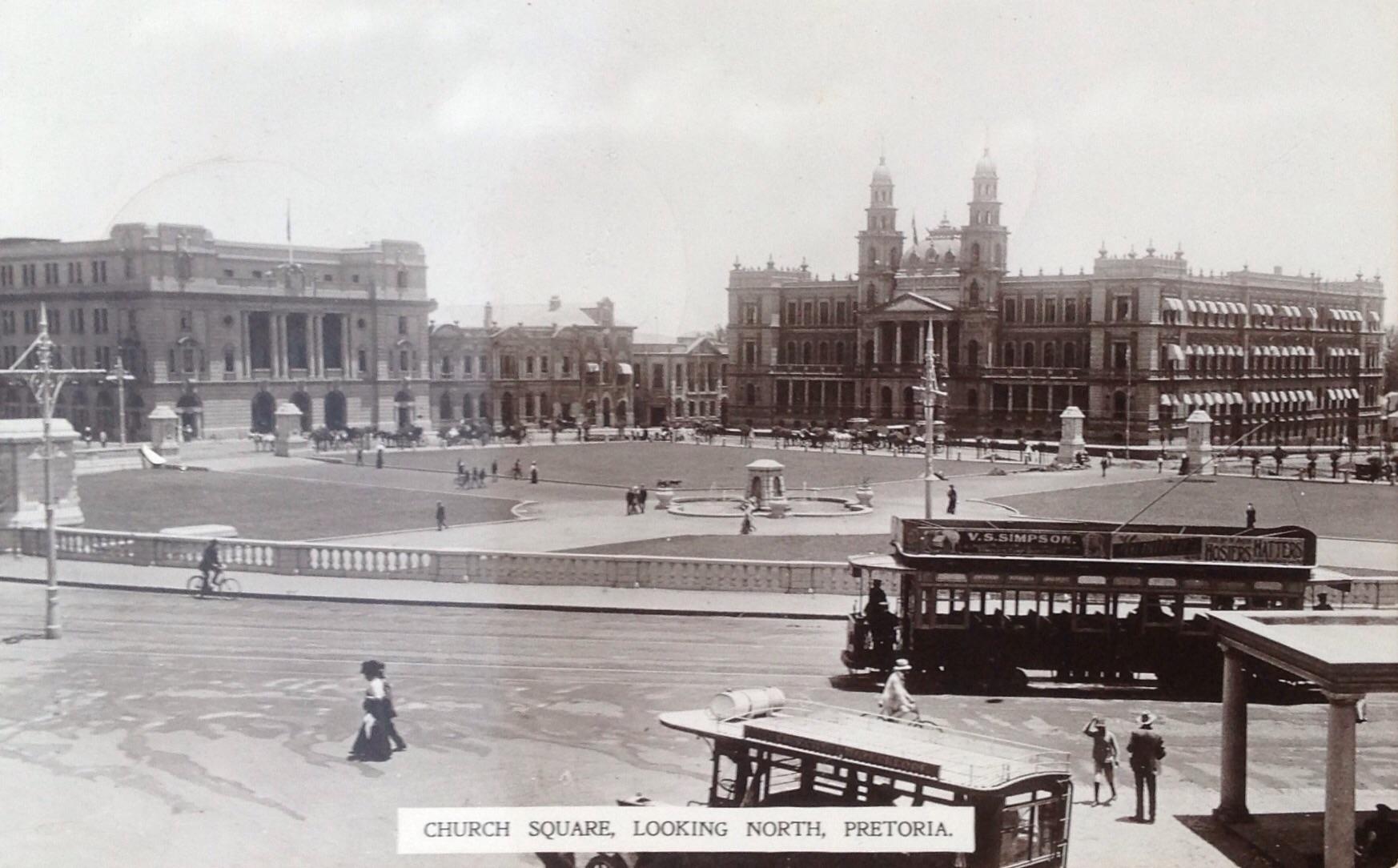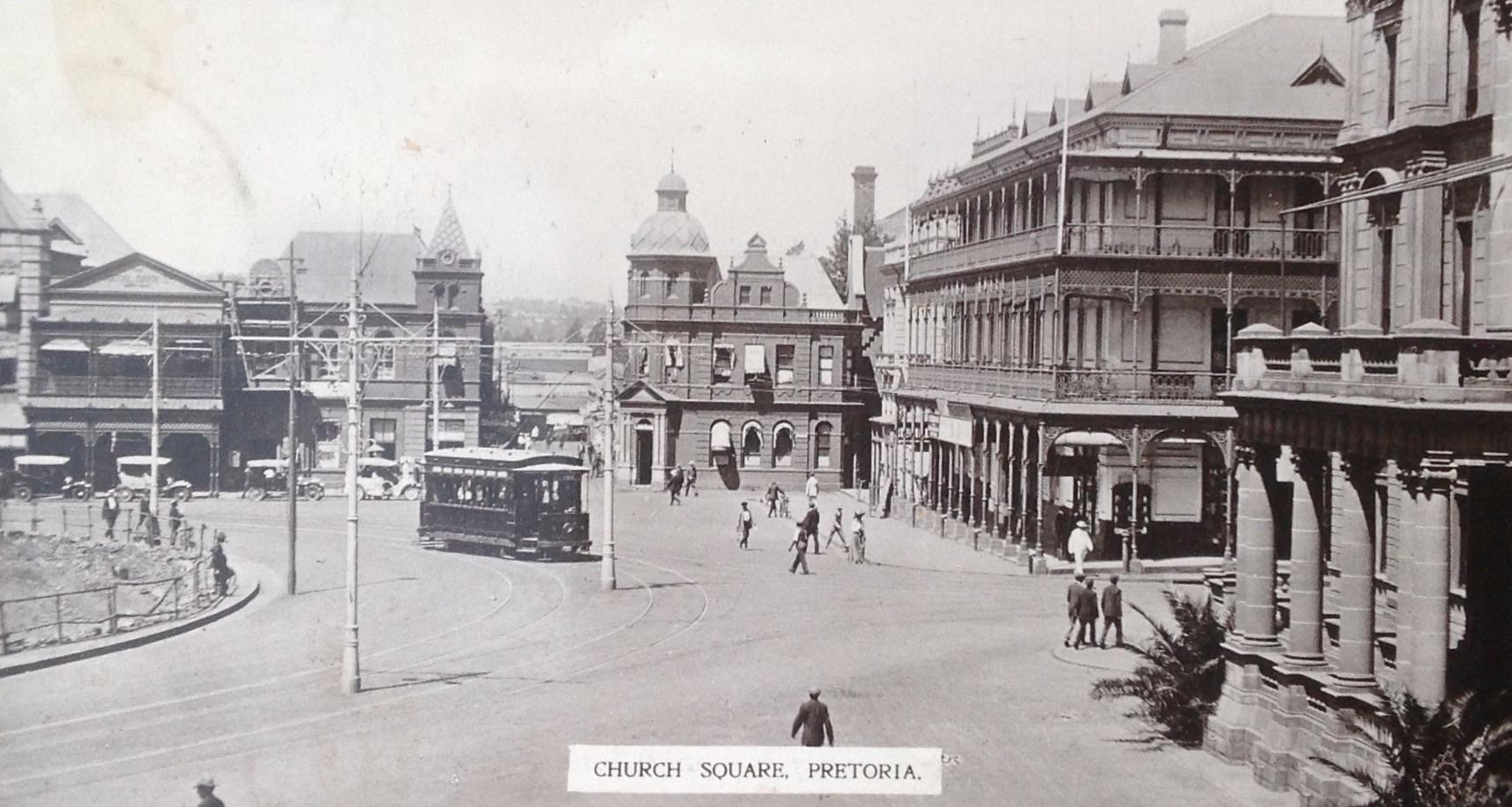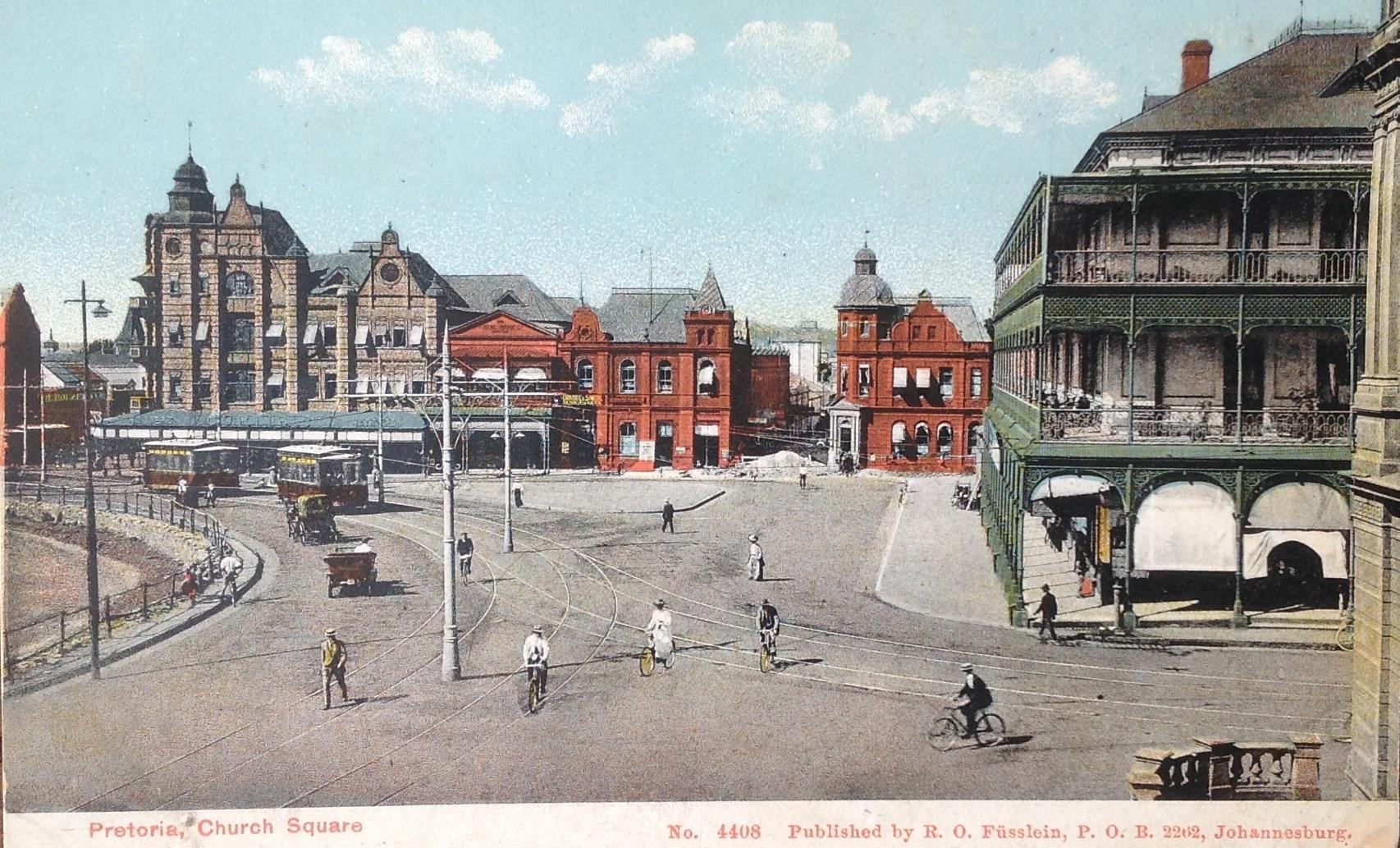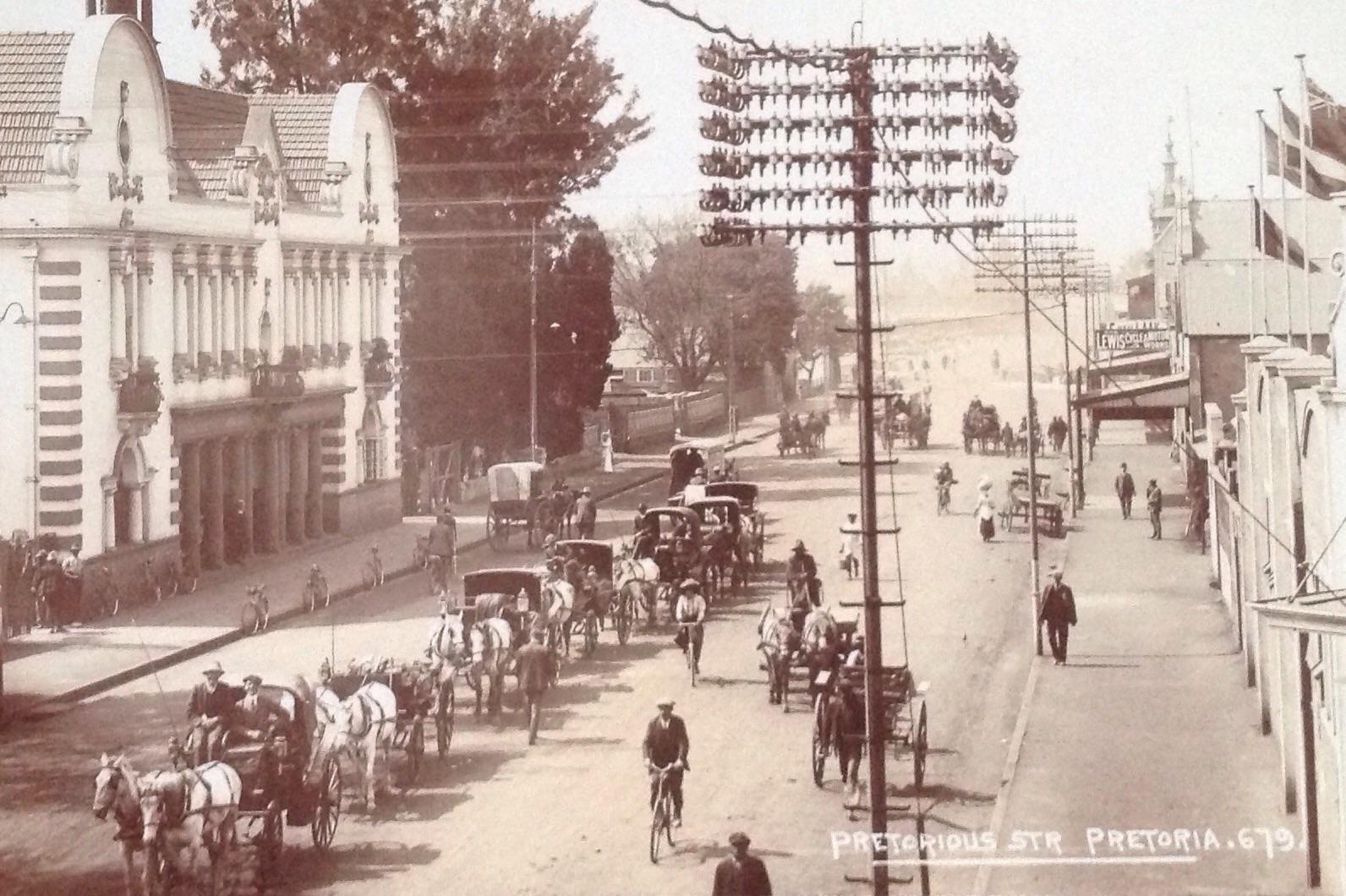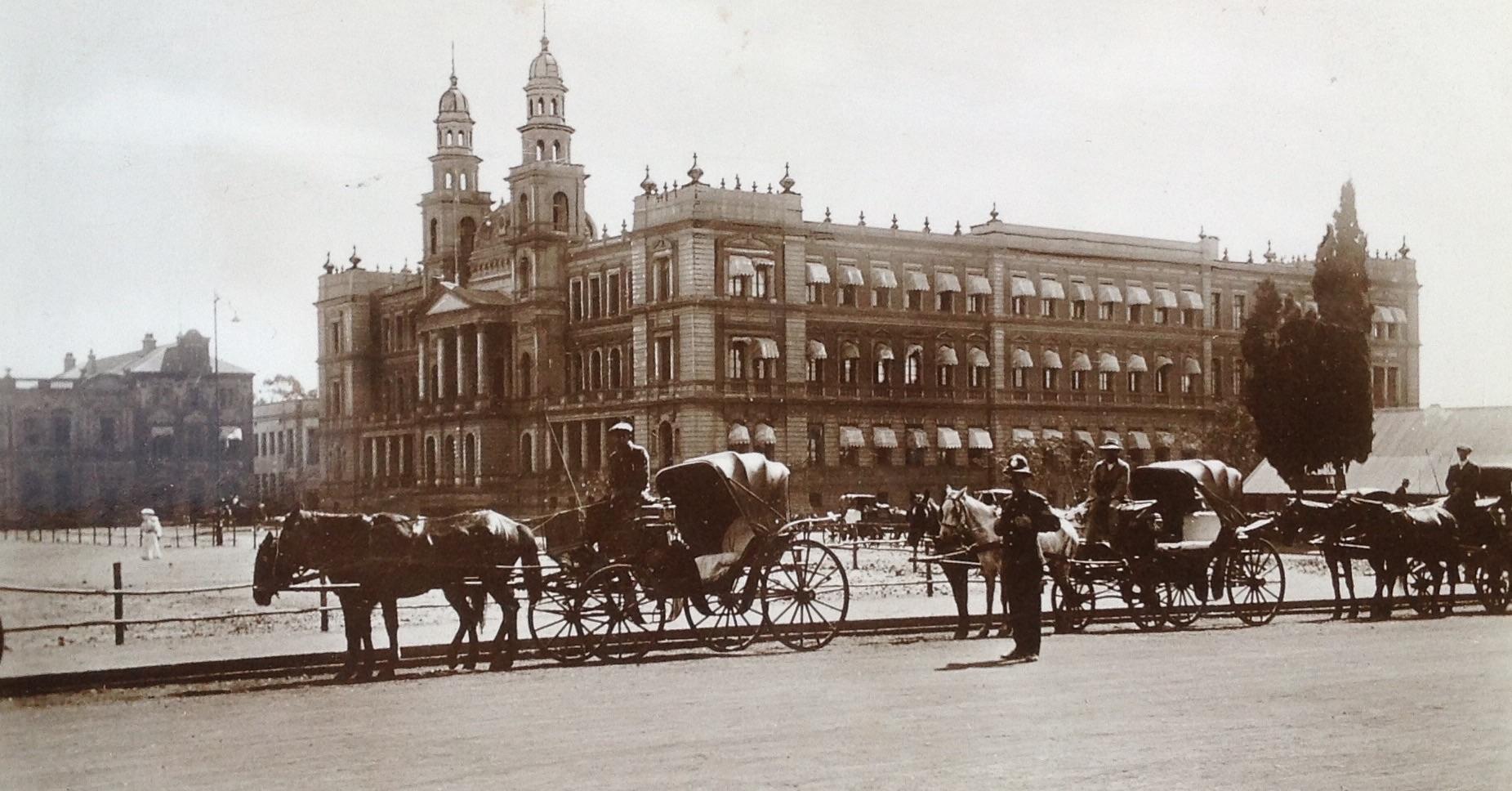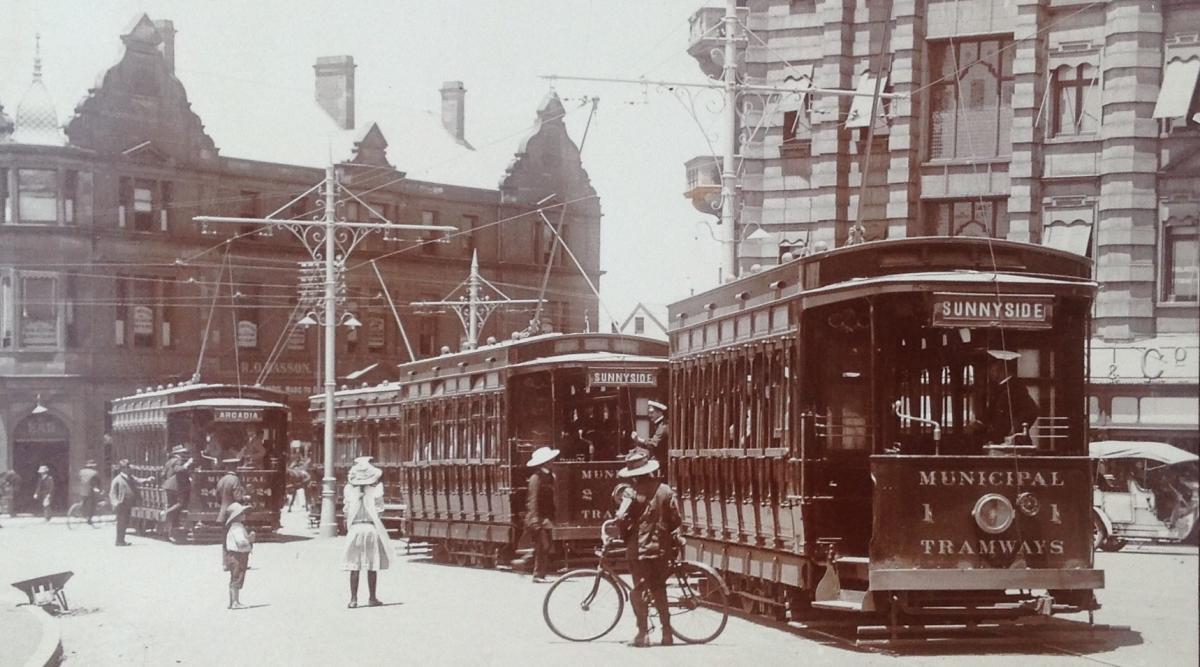
Disclaimer: Any views expressed by individuals and organisations are their own and do not in any way represent the views of The Heritage Portal. If you find any mistakes or historical inaccuracies, please contact the editor.
The last tram journey in Pretoria took place during 1939 - eighty years ago. Therefore, today it may only be citizens born prior to around 1933, who resided in Pretoria at the time, who may recall the tram activity or may even have travelled on a Pretoria tram as a child.
The purpose of this article is to supplement Claus Schutte’s recent article on Pretoria trams (click here to view) with additional visual evidence of earlier tram activity in Pretoria.
Only picture postcard images produced at the time have been included in this article. The postcards presented here not only show trams during the various stages of development during the first 23 years of the tram service activity in Pretoria, but also showcases Pretoria’s growth and development as a city over the years.
The images show new buildings having replaced older buildings or new businesses having established themselves in town. Although the main theme is Pretoria’s tram services, commentary on some of these developments has been included below many of the images.
Dating of cards is also assisted by some of these developments. On some picture postcards, the Church can be seen standing on Church Square, whilst on the next card the Church no longer stands, which assists in dating the images.
The use of picture postcards was exceptionally popular as a communication instrument between mainly the 1900s and 1920s. Today, these images provide us with a rich historical insight into Pretoria’s history. The production of picture postcards declined drastically from the 1920s onwards, resulting in reduced visual evidence being available in picture postcard format of Pretoria’s growth and development post this era.
At the time that trams were introduced in Pretoria, Church Square was one of the city's major attractions in that it was not only the central hub of town but was also used as a marketplace and sports field. Residents wanted it to be shown off as a major city that was developing. To achieve this, a public transport system was required.
Trams were initially seen without advertisements on them, but with commercialisation trams clearly became a popular platform for the municipality to generate additional income from. It is not clear when the advertising on trams started – probably from mid 1910s onwards. Trams prior to this period will therefore have no advertising on them. Where possible, these ads have also been pointed out underneath the relevant image descriptions.
Pretoria’s tram service was not the first to be established in South Africa. The first South African tramway service was in Cape Town. The Cape Town and Green Point Tram company began operations on 1 April 1863, some 34 years prior to Pretoria’s tram services.
Lunch hour being depicted in a humorous picture postcard (Circa 1912). Although the card states: 1 o’clock Car going up Church Street, this same artwork has been seen in a picture postcard format for at least one European City.
1. Snippets on Pretoria’s tram history (1897 to 1939)
- As early as 1890, the Zuid Afrikaansche Republiek (ZAR) provided a concession to the Pretoria Tramway Company (PTC) to provide tram services in Pretoria;
- The PTC started with eight trams (with long and shorter trams) and 50 horses on 24 December 1897. The PTC’s offices were based in Bureau Street;
- The initial tram route was from Church Square to the Sunnyside terminus on the west bank of the Apies river at the top end of du Toit Street – a nearby bridge was referred to as the Tram bridge;
- After being in service for only two years, the tram services temporally had to be halted for a period of almost 4 years due to the horses that were required for the war effort during the Anglo-Boer War;
- After the war, the services were resumed by the previous PTC tram services manager Mr. JE Burdekin during July 1903;
Hand coloured picture postcard (circa 1916) showing a tramcar traveling on Church Street East towards Church Square returning from either Sunnyside or Arcadia. The building to the right of the tramcar is Hamilton’s Durban House – an upmarket general store. Note the advertising on top of the tramcar which seems to read “Laws children’s wear” – AT Law was a draper and ladies outfitter.
Hand coloured picture postcard (circa 1908) showing tramcar 4 traveling on Church Street East towards Church Square returning from either Sunnyside or Arcadia. On the right the AMM’s sign can be seen. They were provision merchants. The horse drawn wagon on the right belonged to Johnston & Co Grocers.
Picture postcard (Circa 1908) arriving in Church Square from either Arcadia or Sunnyside. The car seems empty.
- Due to an established power station already in existence in Pretoria as early as 1889 (in Pretorius Street opposite today’s State Theatre, just to the east of the second tram shed) and electric tram services also coming into use in Europe and the USA at the time, it made sense for the Pretoria municipality to consider electrification of the tram services accordingly. Following his study tour of Europe to investigate electric tramway systems, Mayor JG van Boeschoten reported on this concept to the municipal Town Council during 1908. This resulted in the Town Council supporting the electrification of the tramway by awarding £75 000;
- As a result, 14 tramcars were supplied by Dick Kerr & Co whilst The Telegraph Manufacturing Company erected electric cables and H. Rainey laid the new tracks. The first electric tram travelled the Sunnyside route on 2 November 1910 signaling the final retirement of horse drawn tramcars;
- All the routes combined comprised 14.8 km route and 21.6km tracks.
- During 1912, the specially built tram sheds on the corner of van der Walt (Lillian Ngoyi) and Schoeman Street (Francis Baard) were completed;
- During 1913 the Tram Traffic Superintendent was A. Evans and the Car shed and Track Superintendent was J. Burtonwood;
- An updated version of the electric tram was introduced during around 1914, fitted with air brakes, an enclosed saloon and protection for the driver;
- The last electric trams to run in Pretoria left the van der Walt Street sheds on 19 August 1939 when a fleet of modern electric single and double decker trolley buses replaced tram transport.
Real picture postcard (Circa 1915) enlarged. This image best depicts a tram showing the back and front. Each tramcar had two operating stations, back and front of the vehicle, each with a bell to warn pedestrians of the approaching tram. Two trams could be operated with two trams coupled together, but reportedly, the running was rough and unpopular with both crew and passengers.
2. Horse drawn trams
Horse drawn trams were already introduced in Johannesburg six years earlier - February 1891.
Horse-drawn trams in Pretoria, the only public transport in place at the time, were in service between 1897 and 1910. Some 9 years in total (the almost 4-year break in tram services during the Anglo-Boer war excluded).
When the services were resumed in Pretoria during 1903, the Pretoria Municipality purchased the concession from PTC. The PTC therefore was effectively in existence for only 2 years (the war period excluded).
The first sheds and horse stables were at the corner of Spuy and Bourke Streets in Sunnyside.
The trams were roofed but were open at the sides and the passengers sat on planks stretching across the tramcar. The seats were without backs resulting in the rides not being the most comfortable.
Images of horse drawn trams in Pretoria are generally scarcer.
Picture postcard (Circa 1904) showing horse tram number 11 on Market Street en route to Church Square from the Pretoria Station. This image was taken shortly after the tram services resumed post the Anglo-Boer war. This image confirms that the Pretoria Municipality bought the tram concession from Pretoria Tramway Company during 1903. Note the conductor sitting at the back. These horse tramcars had roofs with no sides. In the distance the church on Church Square can be seen. This church was demolished during 1904/1905.
Picture postcard (Circa 1903) showing horse trams 1 and 4 on Church Square amidst Churchgoers attending Lord’s Supper at the church which stood on the left of the image (not visible). The 3-storey Transvaal Mortgage and Loans Building (centre of image) was built around 1890.
Picture postcard (Circa 1904) showing a horse tram on Church Street East en route to Sunnyside passing Market Square (where the Pretoria State Theatre stands today) with the 3-storey Marks Building on the right. The tram is about to reach the point where it would have turned right into Prinsloo Street. Note the church standing on Church Square in the background.
One of the more common Pretoria picture postcards in that the hotel may have had these for sale to their guests. This postcard (Circa 1908) shows a horse tram entering Market Street en route to the Pretoria Station. The Grand Hotel (initially known as the President Hotel) was built during 1890.
Hand coloured picture postcard (Circa 1905), showing horse tram on Church Street East en route to Sunnyside. The building is that of TW Becketts and Co (on the corner of Church Street East and van der Walt Street. Becket was one of the first traders to have settled in Pretoria during 1874.
3. Tram routes in operations
Electrified routes were in operation between 2 November 1910 and 19 August 1939 – A period of almost 29 years.
The various tram tracks can be divided into 7 distinct passenger routes and 2 links from the tram sheds to the main tracks.
The first three routes in place were the routes to the Station, Sunnyside (towards the east) and West End. The remaining routes were established later.
3.1 Church Square to the Pretoria Railway Station (via Market Street)
This route was a simple route down Market Street, all the way to the station, 7 city blocks to the south of Church Square towards Scheiding Street.
During 1913, tramcars would leave the station for Church Square at least every seven and a half minutes which confirms the demand for this type of transport at the time.
Extra tramcars were also introduced to meet important passenger trains.
Real photo postcard (Circa 1912) of tramcar 10 on Market Street heading for the Pretoria Station. The building on the left is the Grand Hotel, whilst the building on the right is the Old Raadzaal.
Real photo postcard (Circa 1915) showing tramcar 22 on Market Street in front of the Transvaal Museum (built and completed during 1913 - today Ditsong National Museum of Natural History) heading for the station whilst passing a tramcar returning from the station. Advertising on the tramcar that is visible includes Laws children’s wear (from what could be made out – they were drapers and ladies outfitters), Cuthberts Ltd. (boot and shoe merchants) and that of Trevenna Ice.
Hand coloured picture postcard (Circa 1910) showing tramcar 2 about to enter Church Square returning from the Pretoria Station. The building on the right is the Old Raadzaal, whilst the double-storey building behind the tramcar was occupied by A. Savelkoul Outfitters. Savelkoul, who originated from Antwerpen, set up business in Pretoria during 1897 and had this large building completed a year later.
Picture postcard (Circa 1925) showing tramcar parked at the Pretoria Station. Advertising on the tramcar includes Golden Cloud Flour, Picardie Brandy as well as a Coffee advertisement. The Kruger statue was erected at the station during 1925 where it stood until 1953.
Hand coloured postcard (Circa 1916) showing 2 tramcars at the station. The advertisements on both tramcars are difficult to determine, but the tramcar at the back carries a cigarette advert. The station, the first public building designed by Herbert Baker, was completed during 1910.
3.2 Church Square to Sunnyside
This route went down Church Street East, where it turned right into Prinsloo Street (just past Market Square where the State Theatre stands today) and 3 blocks further it turned right into Skinner Street followed by a left onto du Toit Street (very short stretch) where after the track turned left into Esselen Street where the initial route then reached its endpoint at the Tramway terminus at Kruger Square (later became Sunnyside sports park) in de Kock Street.
In later years the tram route was adjusted to turn right into Devenish (from Esselen Street) and left into Jorrissen Street with the endpoint being at the crossing at Melville Street.
The Tram bridge across the Apies river at the Esselen and van Boeschoten avenue intersection dates back to 1897 when the original narrow trestle bridge spanned the rivulet to carry horse trams. This bridge was later widened to carry other traffic – electric tram transport included.
A Real Photo Postcard (dated 1913) showing tramcar number 23 just having started its journey from Church Square en route to Sunnyside.
Hand coloured picture postcard (circa 1908) showing a horse tramcar crossing the Tram bridge over the Apies river en route to Sunnyside (near Esselen Street).
Picture postcard (circa 1905) showing the same bridge as the image above, namely the Sunnyside Tram bridge.
Picture postcard (1904) showing the tram tracks in du Toit Street on the Sunnyside route. These track would still have been used by horses in that trams were only converted to electricity during 1910. Note the sideline.
3.3 Church Square to West End (via Church Street west)
Once on Church Street west, this was a straight route up to the endpoint at the Schutte Street crossing.
This route went past Paul Kruger’s house which is located across the road from the church he frequented. Kruger himself, prior to leaving Pretoria, may have experienced a trip on a horse drawn tram during the first two years of the tram service.
Real Photo postcard (Circa 1915) showing tramcar 1 travelling down Church Street West towards West End. At this point the tram service towards the Ou Volks Hospital would have turned left into Potgieter Street. See overhead tram cables in front of the church confirming this aspect. Paul Kruger’s house, although not visible on the image, was on the left of the tramcar – across the road from the church. The X on the image indicates where the Post Office is situated in the distance on Church Square.
Picture postcard (Circa 1910) showing tramcar 14 leaving Church Square towards Church Street West en route to West End. Note the “new” Post Office on the right in the final stages of completion.
3.4 Church Square to the Zoo (via St. Andries Street)
This route, only introduced later, ran from Church Square down Church Street East, where the track turned northwards into St. Andries Street and came to an end in front of the Transvaal Museum and the Zoo entrance in Boom Street.
A Real Photo Postcard (circa 1915) showing tramcar number 23 returning to Church Square from the Pretoria Zoo (about to turn right into Church Street East). The “Special” sign suggests that this was a pre-booked trip (done at the municipal offices prior to the journey).
3.5 Church Square to the ZAR Hospital (Ou Volks Hospitaal) in Potgieter Street.
From Church Square, the route went down Church Street West with a left into Potgieter Street. The endpoint was the old ZAR Volks hospital in Potgieter Street (between the prison and the military headquarters).
To date, the author has not sourced any postcard images of the tram track on Potgieter Street.
3.6 Church Square to the Union Buildings (via Nel Street)
During 1913, after the completion of the Union Buildings, the tram route was expanded there following a financial contribution by the central government.
From Church Square, the tram went all the way down Church Street East, past the Sunnyside and Arcadia turn offs with a left turn into Nel Street where it followed a windy route amongst the pine trees up to the Union Buildings.
Real photo postcard (circa 1925) showing the tram tracks (left hand bottom corner) going up Nel Street, through the pine trees, towards the Union Buildings. The city of Pretoria can be seen in the background (top right hand of image). Images showing tram services to the Union Buildings are exceptionally scarce for some unknown reason.
3.7 Church Square to Arcadia
From Church Square, the route was down Church Street East where it turned right into Leyds Street followed by a left into Pretorius Street East and ran to the endpoint at the Hill Street crossing.
A Real Photo Postcard (circa 1915) showing tramcar number 3 in Church Street East on its way to Arcadia. The driver can clearly be seen standing behind the controls of the tram. The large building behind the tram was known as the Mark’s Building (also referred to as the Gundelfinger Building because Gundelfinger, a wholesale merchant, occupied part of the building during around 1913). The Pretoria State Theatre is located opposite this spot today.
Picture postcard (circa 1912) showing tramcar 14 on Church Street East en route to Arcadia. Just behind the corset sign on the left is the Central News Agency. Note the two boys on the right pulling what seems to be an advertising sign for Goodman & Sons. One boy is waving at the camera.
Picture postcard (circa 1912) showing tramcar 24 en route to Arcadia. Note the four types of transport portrayed in this image namely electric, motorised, horse drawn cart and bicycles. Also note the Laws advertising (children’s wear) on top of the tramcar.
Real Photo postcard (circa 1913) showing tramcar 13 en route to Arcadia. Note the scramble by passengers to get onto the tramcar as well as the two conductors (uniformed men).
3.8 Links from tram sheds to the main tracks
Both these short routes would have been non-passenger carrying routes. They were simply a link from the main track back to the sheds (or vice versa).
Although the author has not been able to source picture postcard, or any other images, of these two short stretches from the sheds to the main links, the assumption is that trams had to move down these tracks into the main links after maintenance work on them was completed.
The two sheds referred to are:
- The initial horse tram sheds and stables on the corner of Spuy and Bourke Street in Sunnyside. It is assumed that the link to these sheds was via Esselen Street;
- The tram shed on the corner of van der Walt and Schoeman Street, two city blocks from Church Street - This tram shed still stands today after being converted into a shopping centre.
4. Activity around Church Square - the primary starting point of trips to outlying areas
The hub of all tram movement was Church Square. Multiple picture postcard images exist of trams entering and exiting the square.
Real picture postcard (Circa 1915) showing tramcar heading for Arcadia (about to enter Church Street East). The tram car carries advertising by Golden Cloud Flour and “Apolin Enamel for household use”. Note the tram/bus terminus (front right). The taller building is the Tudor Building (where Pretoria’s first lift was installed).
Picture postcard (Circa 1913) showing passengers rushing towards a tramcar after a severe hail storm hit the city. Photograph taken from almost the same angle as the image above. The tramcar carries advertising of a coal merchant. Many people stand under cover in the tram/bus terminus on the right.
Hand coloured picture postcard (Circa 1913) showing tramcars entering and leaving Church Square. What makes this image significant are the 4 motorised vehicles standing parked (all seemingly the same model). The cars then would not have been produced in the colors depicted on this hand coloured photograph – They would all have been black. During 1913, Pretoria already had 114 registered vehicles on the road.
Real photo postcard (Circa 1911) showing tramcar 10 en route to Sunnyside and tramcar 2 on its way to Pretoria Station, Volks hospital or West End. In this image the tram/bus terminus has not been built as yet. On the right the redesign work in progress on the square can be seen. The larger buildings are the Standard Bank Building (left), Grand Hotel (middle) and Raadzaal (right). Interesting observation: Not a single individual on this image can be seen without a hat (male and female).
Picture postcard (Circa 1911) showing tramcar 24 awaiting departure to Sunnyside on the east side of Church Square. Image similar to the one immediately above. In this image the work being conducted on the new square is more visible.
Real photo postcard (Circa 1916) showing tramcar passing the tram/bus terminus (on right). Significant in this image is the bus that is visible in front. In the background the completed work on the square can be seen. The building on the left of the image is the post office. To the right of the post office stands the National Bank. The larger building is the Palace of Justice. The advertisement that can be seen on the tram is that of VS Simpson (sail, tent, mattress, sunblind and flag maker) as well as Hamilton’s hatters and hosiers.
Real photo postcard (Circa 1912) showing a tramcar en route to West End. Note the motorised vehicles in the background. The building on the far left is the Natal Bank.
Hand coloured postcard (Circa 1911) showing two tramcars at their departure point. Between the two brown buildings (where the pile of rubble can be seen) is Bureau Street. This is where the Pretoria Tram Company offices was located.
5. Rates and hours of service
During 1913, the cash rate was 2d or 1 ¼ d per coupon for every stage. Coupons could also be bought in books of 12 for 1/3 at the Tram offices at Church Square.
School tickets were only issued to students in instances where a certificate, signed by the school principal, could be presented.
The hours of operation were extensive with regular trips intervals on the main routes. During week days, tram services were in operation shortly after 06h00 from mainly the Church Square terminus and operated until shortly before mid-night.
Passengers also had to be reminded that conductors had their duty to carry out and that they could be largely assisted by tolerant passengers.
Dogs were not allowed on cars.
Cars stopped on request after crossing any street. Passengers were also requested not to ride on the platforms of the cars.
All routes from Church Square were a “one stage” fare, except for Sunnyside, Arcadia and the Union Buildings route, which were divided into two stages. This means that a cash rate, during 1913, would have been 4d if a passenger travelled the full distance on these two stage routes.
6. Unanswered questions
In putting this article together, a few additional questions arose. The tramcars were all clearly numbered, yet some numbers did not feature on picture postcard images. Was there a sequential numbering system in place? If so, why were the missing trams not photographically captured? Could it be that they were withdrawn due to production/mechanical issues?
The tramcar numbers extracted from the picture postcards include:
- Horse drawn trams (1897 to 1910): 1, 3, 4, 6 & 11
- Electrical trams (1910 to 1920s): 1, 2, 3, 4, 10, 12, 13, 14, 22, 23 & 24
Then also, how many people were employed by the Municipal Tram services? Were the employees only male or were there some females in service as well? How long was each shift considering that the service ran from early morning until mid-night during the week?
Surely accidents also occurred – would a record exist of these?
7. The sub-economy around the tram services
Whilst tram lines were based in Church Street east and Church Street west, other transport activity around these main arteries was rife. Postcard images confirm how transport by two-horse-carts etc. was a common way of transport. Horse and cart transport operated from Pretorius Street (one street up from Church Square) and Church Square itself. As is the case today, where commuters rely on several transport modes daily, individuals would more than likely start their mode of transport on the tram for the day and then travel home via horse and cart (or vice versa).
Further research and collecting of visual evidence will enrich the information contained in this article, especially for the period between 1920 and 1939.
Real picture postcard (Circa 1912) showing multiple horse carts awaiting passengers in Pretorius Street next to the town hall (just one street up from Church street East). Much of their clientele was probably passengers from the tram services who then needed to travel home (or vice versa). The two gentlemen sitting in the front cart are looking at the camera. The electricity pole with steps is of interest.
Real Picture postcard (Circa 1912) showing multiple horse carts awaiting passengers at Church Square (with the Palace of Justice in the background). Note the police officer standing in the foreground.
Main image: Real Photo Postcard (Circa 1915) showing tramcars 1 & 2 destined for Sunnyside and tramcar 24 destined for Arcadia (leaving Church Square). The building in front of the Arcadia tramcar is the Transvaal Mortgage and Loan Building (later referred to as the Alexandra Building). It had various occupants, such as the Advocates’ Chambers, the Civil Commissioner, a large number of solicitors, accountants, the Pretoria Chamber of Commerce and The Argus Printing and Publishing Co.
About the author: Carol is passionate about South African Photographica – anything and everything to do with the history of photography. He not only collects anything relating to photography, but also extensively conducts research in this field. He has published a variety of articles on this topic and assisted a publisher and fellow researchers in the field. Of particular interest to Carol are historical South African photographs. He is conducting research on South African based photographers from before 1910. Carol has one of the largest private photographic collections in South Africa.
Sources
- Allen, V. (1971). Kruger’s Pretoria – Buildings and personalities of the city in the nineteenth century. Balkema. Cape Town
- Andrews, T. & Ploeger, J. (1989). Street and place names of old Pretoria. Van Schaik. Pretoria
- Beanes, C.J. (Date unknown – Extracted April 2019). Pretoria Fifty years ago. (repository.up.ac.za)
- Breytenbach, J.H. (1979). Die geskiedenis van die Krugerstandbeeld. National Cultural Historical Museum - Pretoria
- Dunston, L. (1975). Young Pretoria (1889 – 1913). Heer Printing. Pretoria
- Lochhead’s guide, Handbook and Directory of Pretoria (1913). 1980 reprint. State Library. Pretoria
- Longland’s Pretoria directory (1899). 1979 reprint. State Library. Pretoria
- Hardijzer Photographic research collection
- South African History Online (Extracted April 2019). First Tramway company in Cape Town commences operations, with a horse (sahistory.org.za)
- Martins, du P. (2014). Old tram tracks around Church Square. Tram tracks of yester year, reveals Pretoria Transport secrets (https://rekordeast.co.za).
- Pretoria - Official guide book (1913). Pretoria and Districts. Government Printing and Stationary. Pretoria
- Pretoria – The administrative capital of the Union of South Africa - Official Handbook and Guide (1932). Minera printing works. Pretoria
- Pretoria – A snapshot guide with map and illustrations. Wallachs. Pretoria
- Punt, W.J. (1992). The Pretoria tram shed. Africana – Journal of Society of Pretoria (Yearbook 10)
- Rekord (2005). Pretoria 150: 1855 – 2005. Hoe ry die Pretorianers, stil-stil so.
- Schutte, C. (2018). Short history tram lines serving Pretoria and the Union Buildings via Church Square (theheritageportal.co.za).
- Unknown (2014). Pretoria tram line ‘find a rich link to history’ (http://www.iolproperty.co.za)
- Unknown (2018). Truck & Bus – Old Pretoria trams and buses (truckandbus.co.za)
Comments will load below. If for any reason none appear click here for some troubleshooting tips. If you would like to post a comment and need instructions click here.

